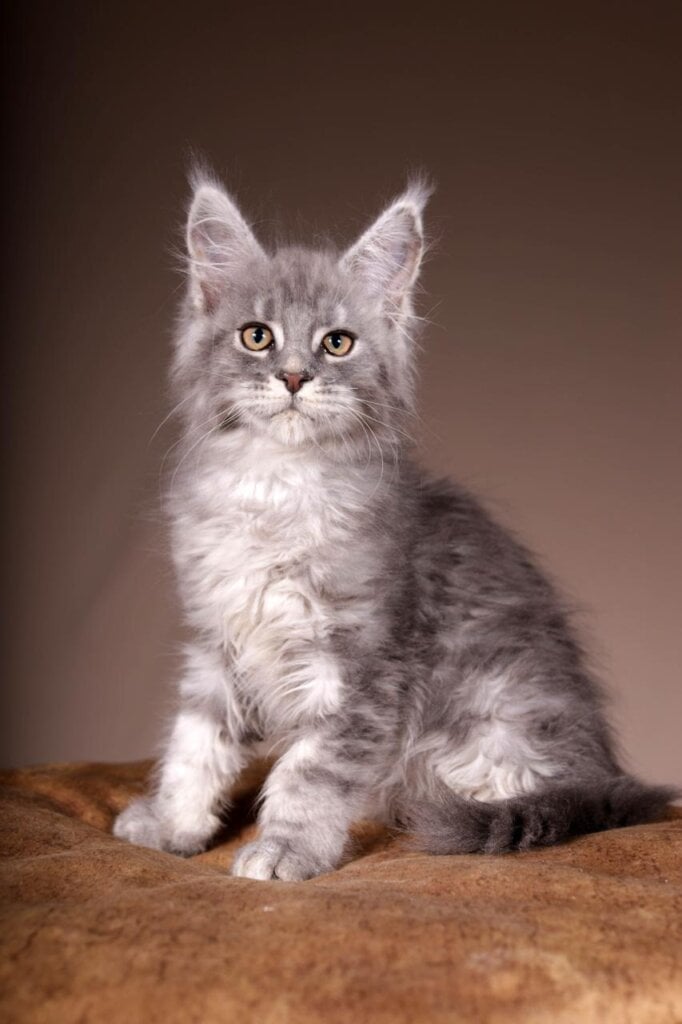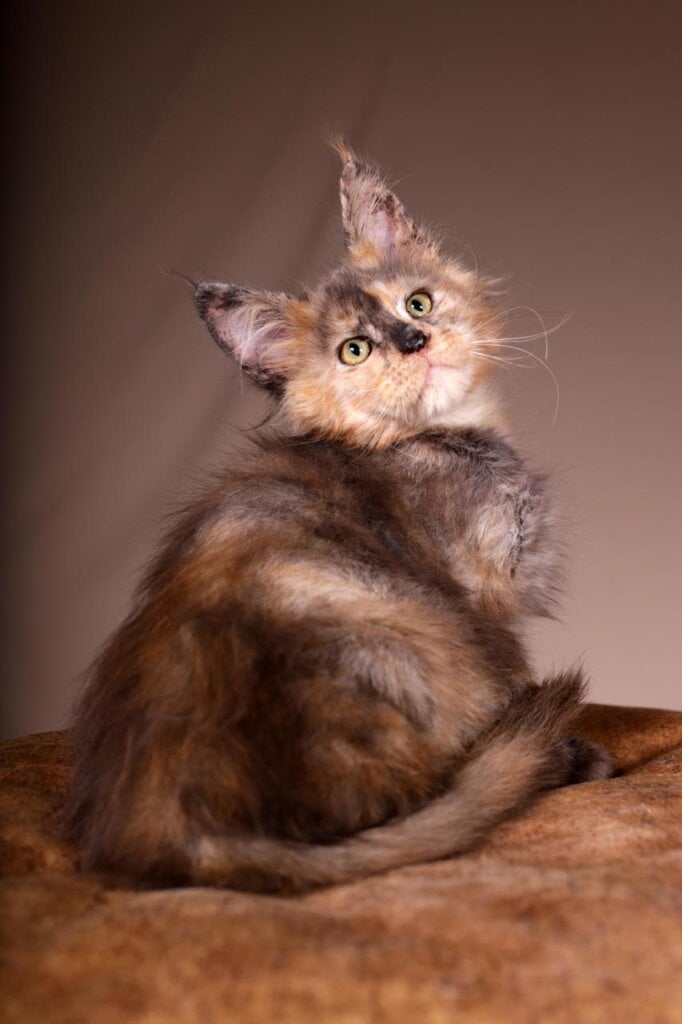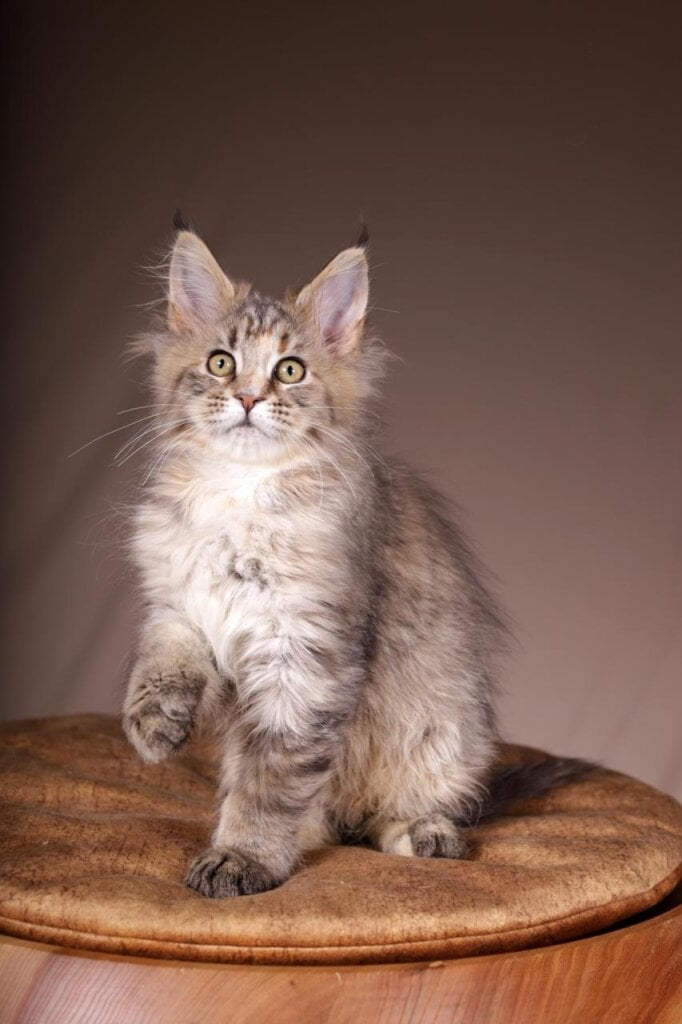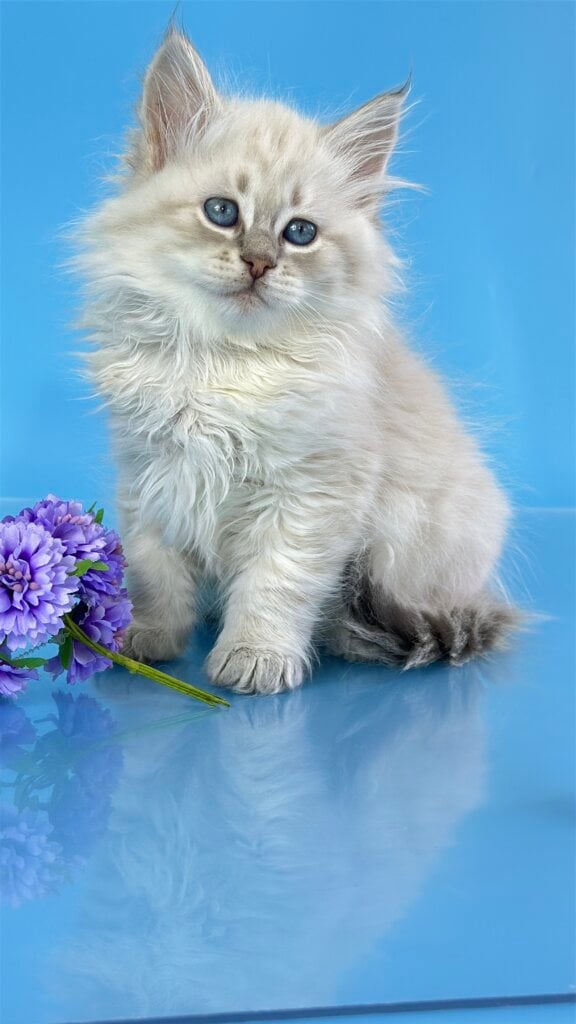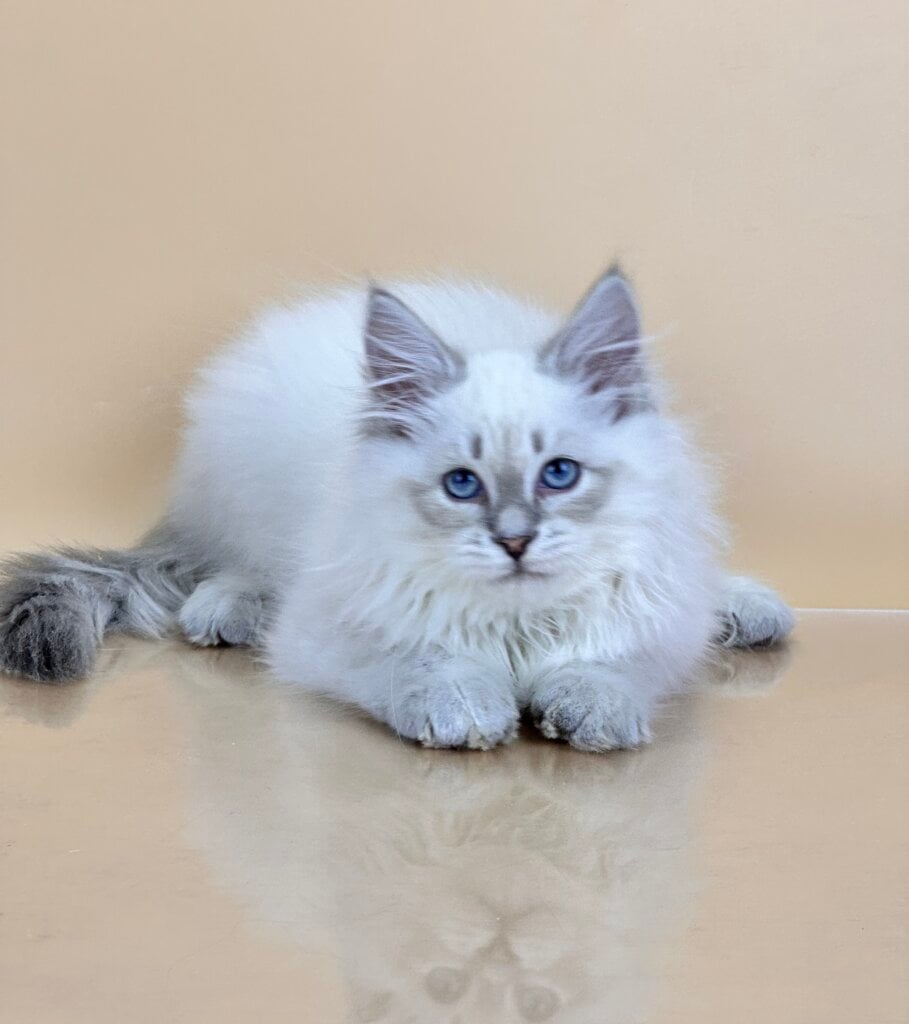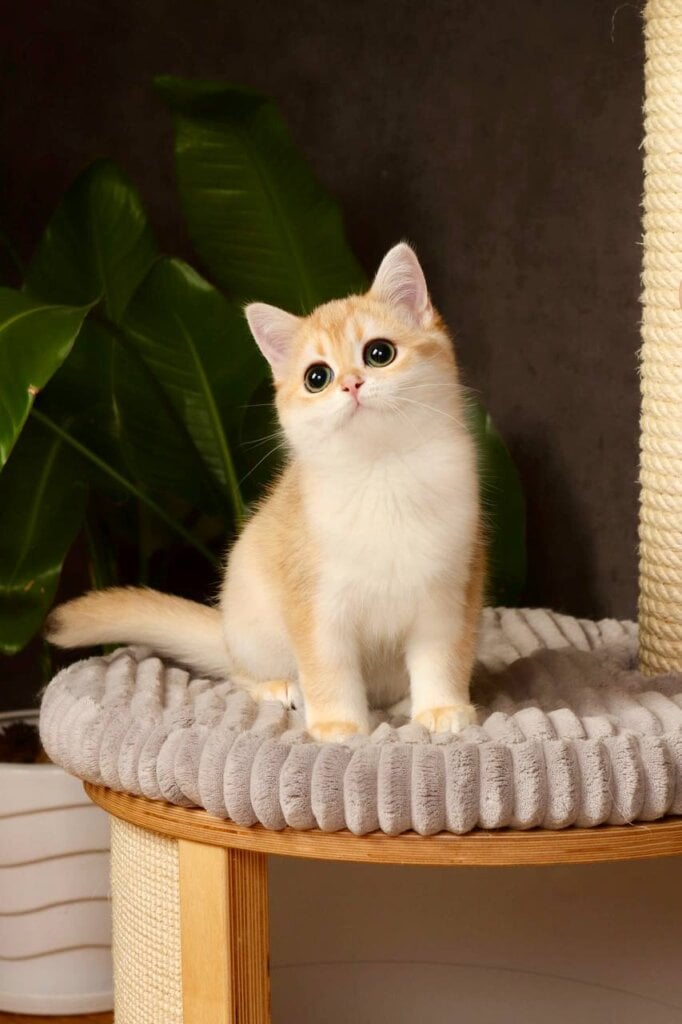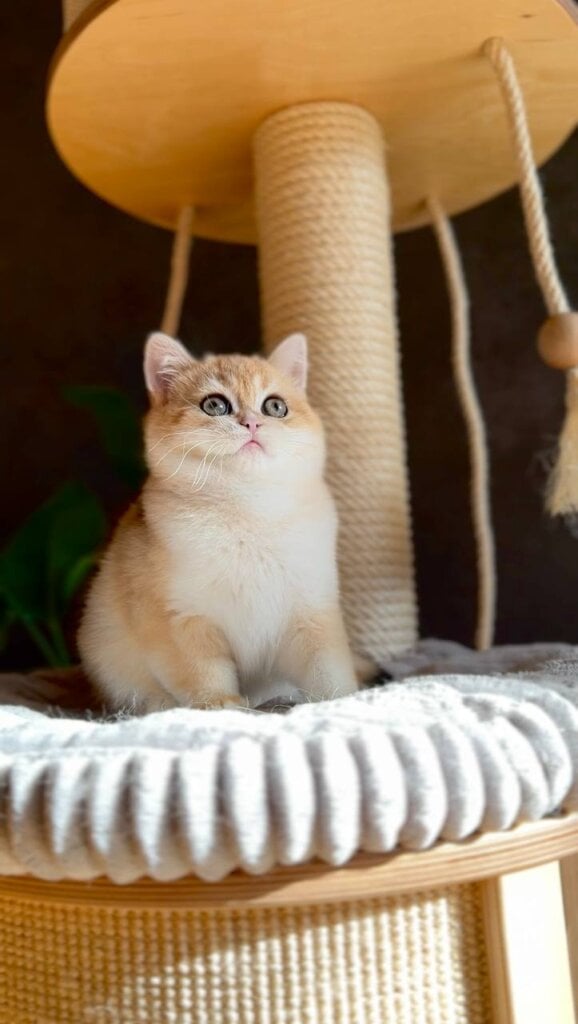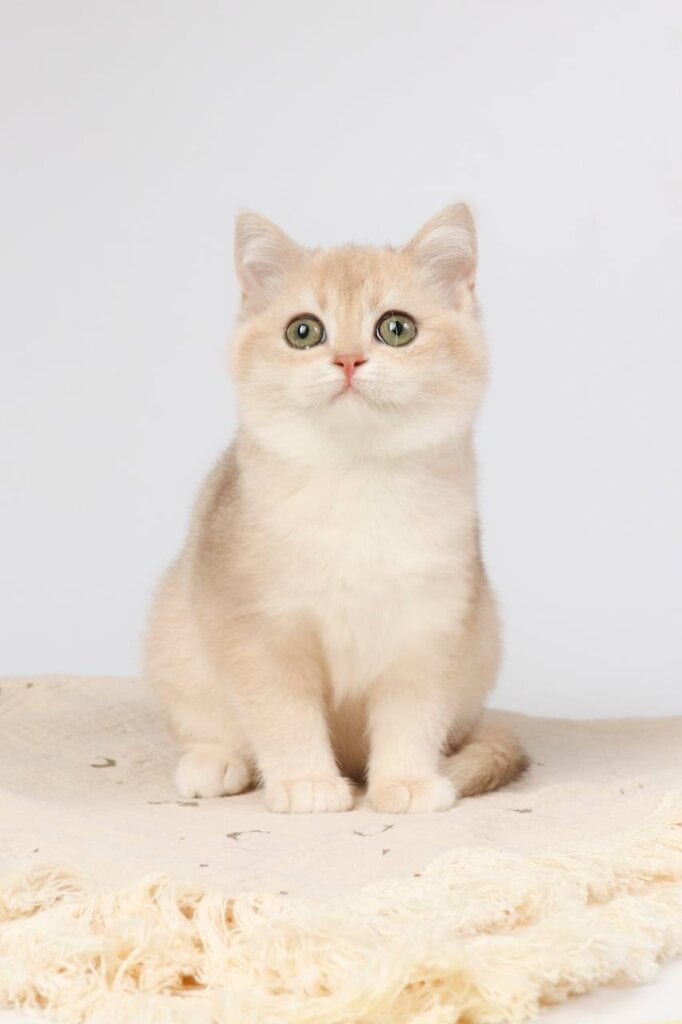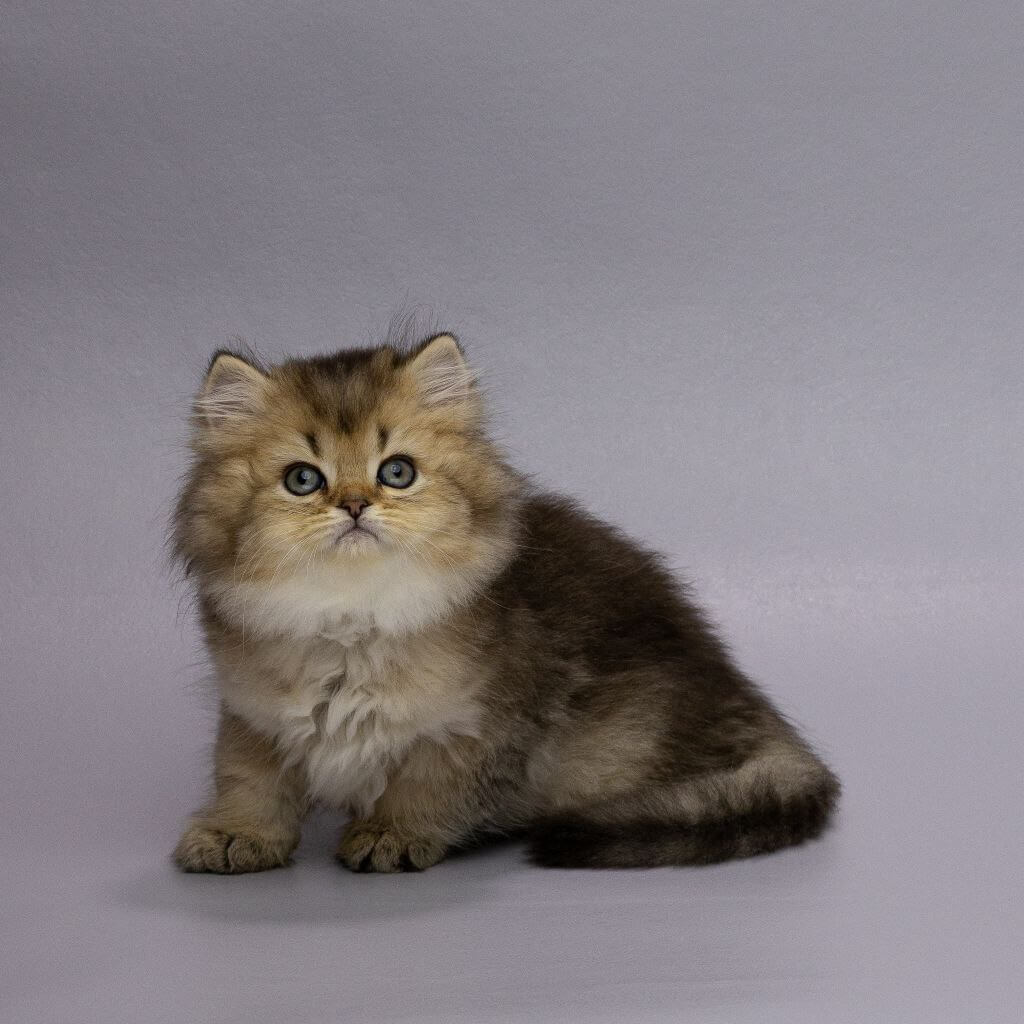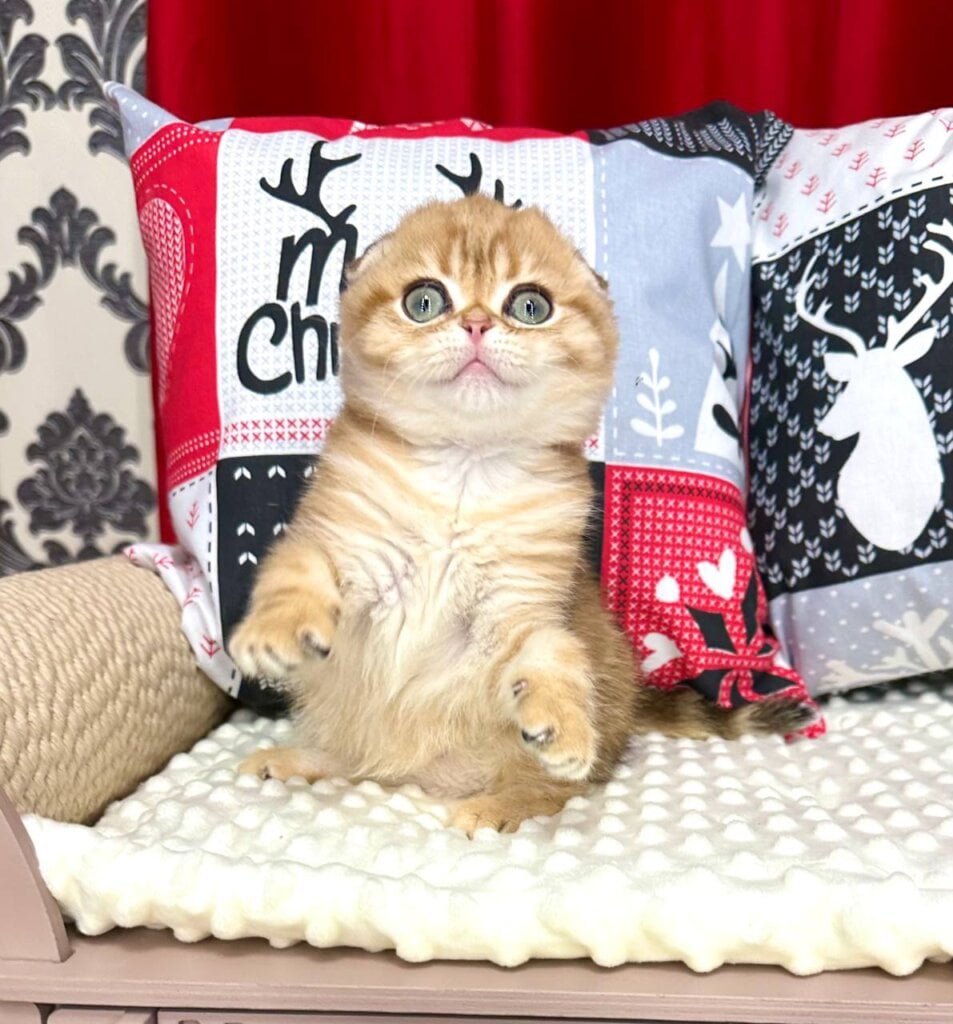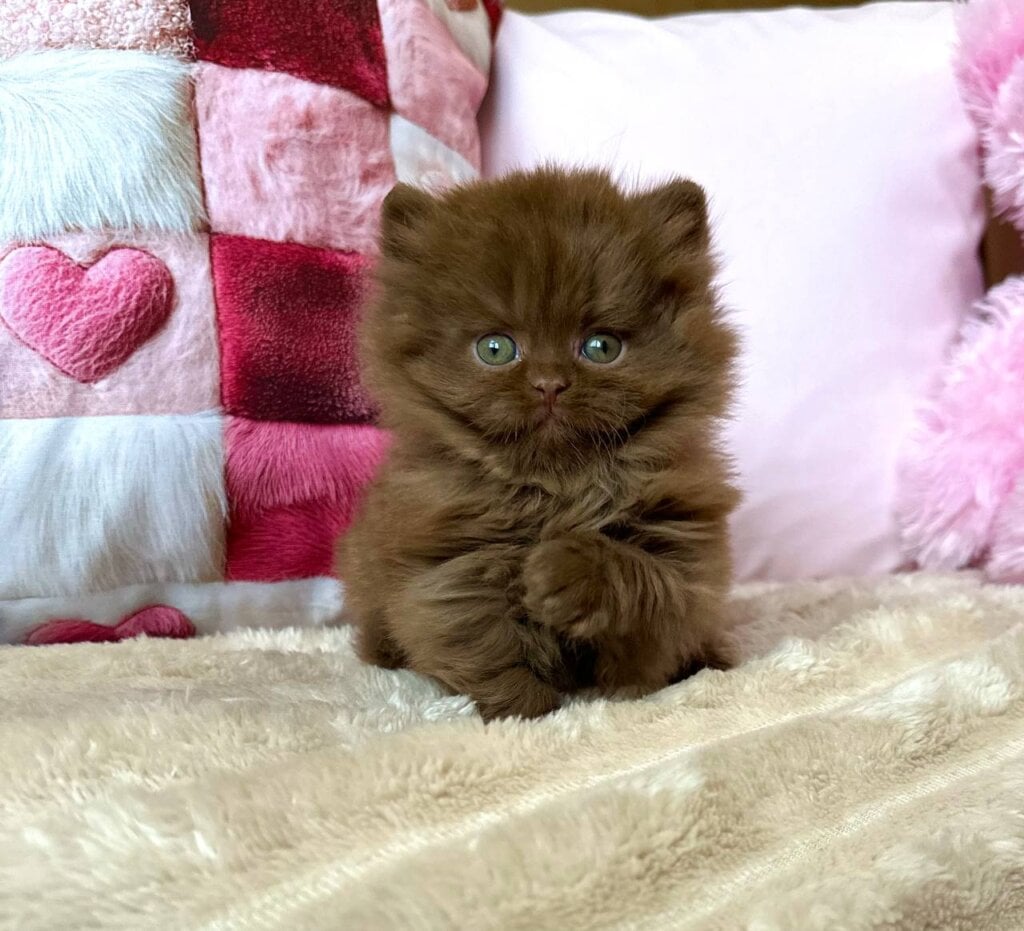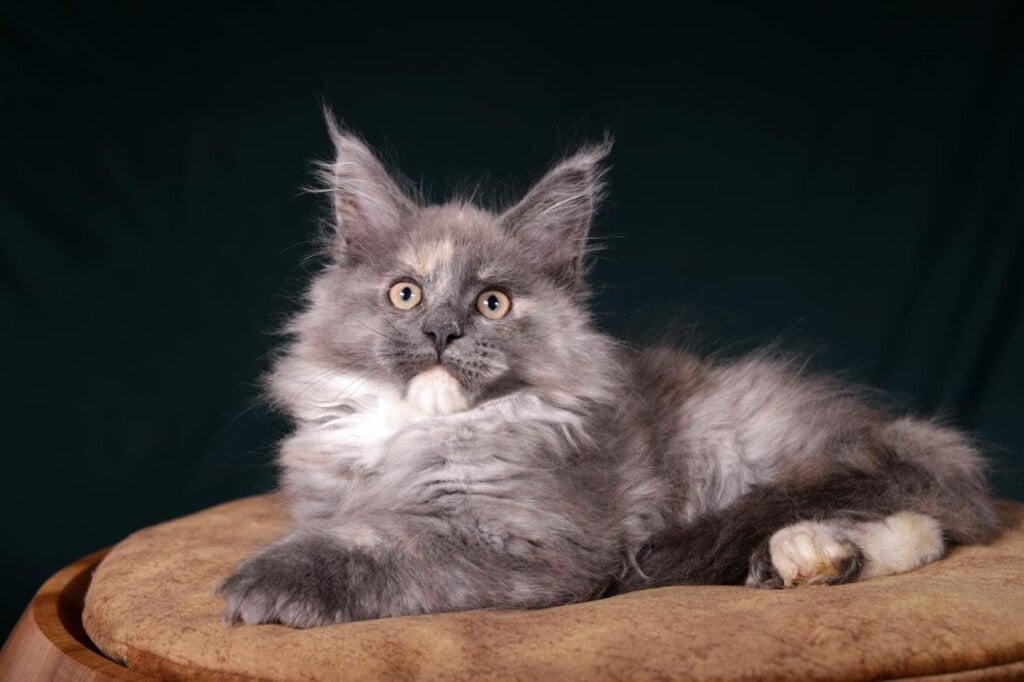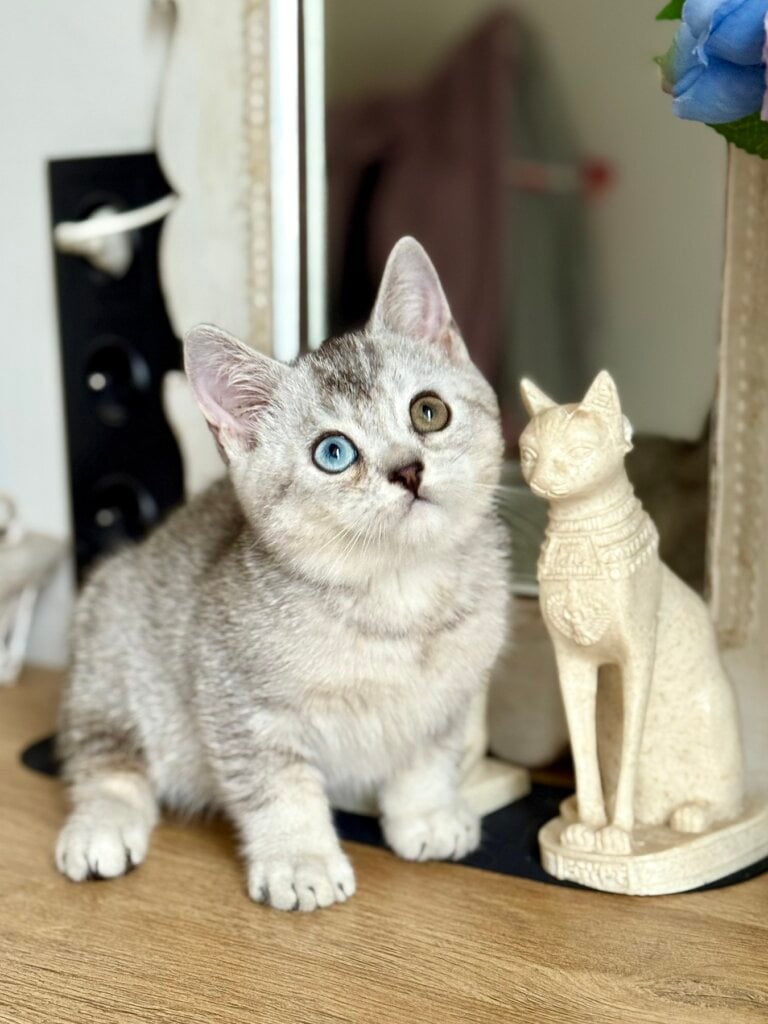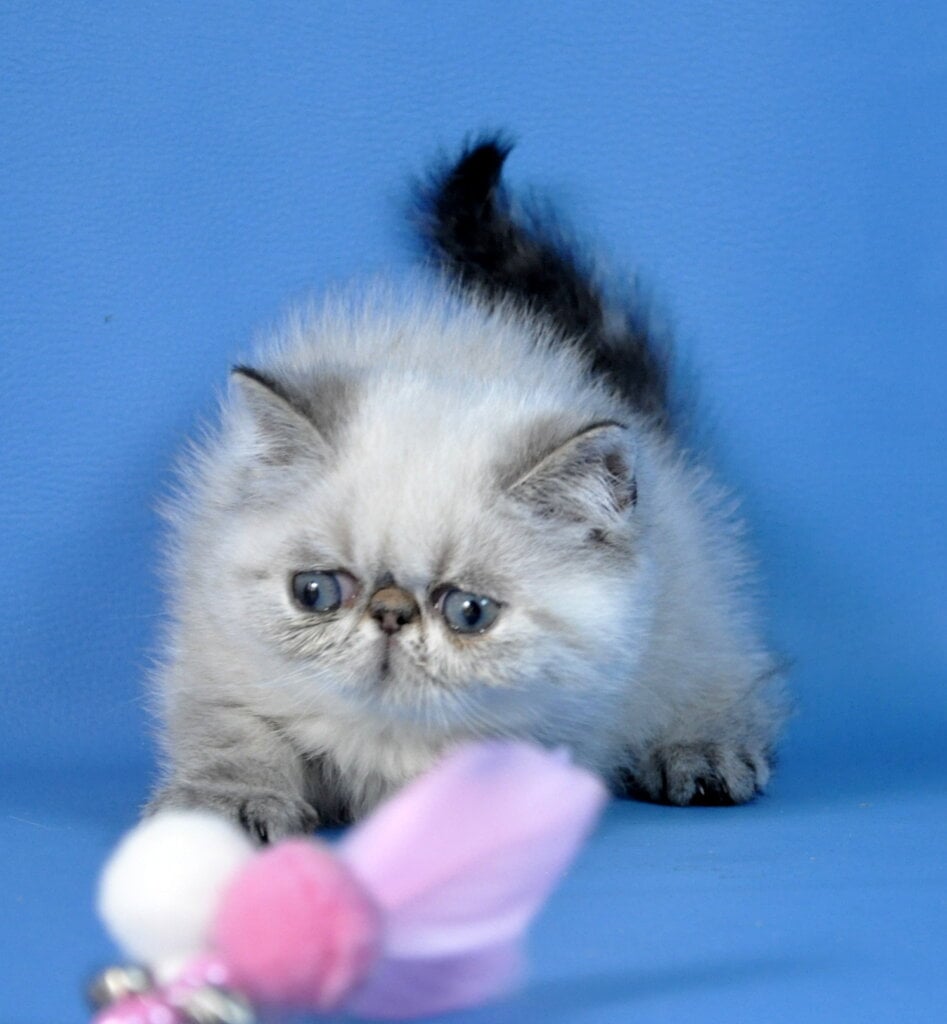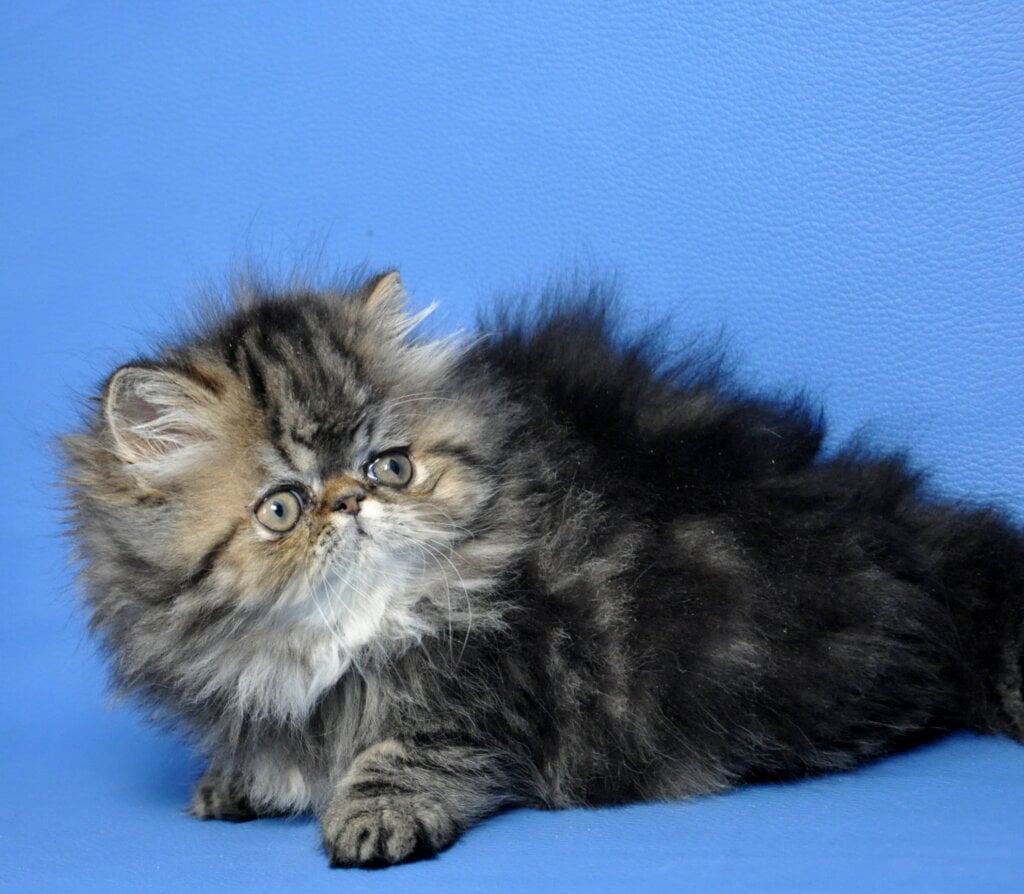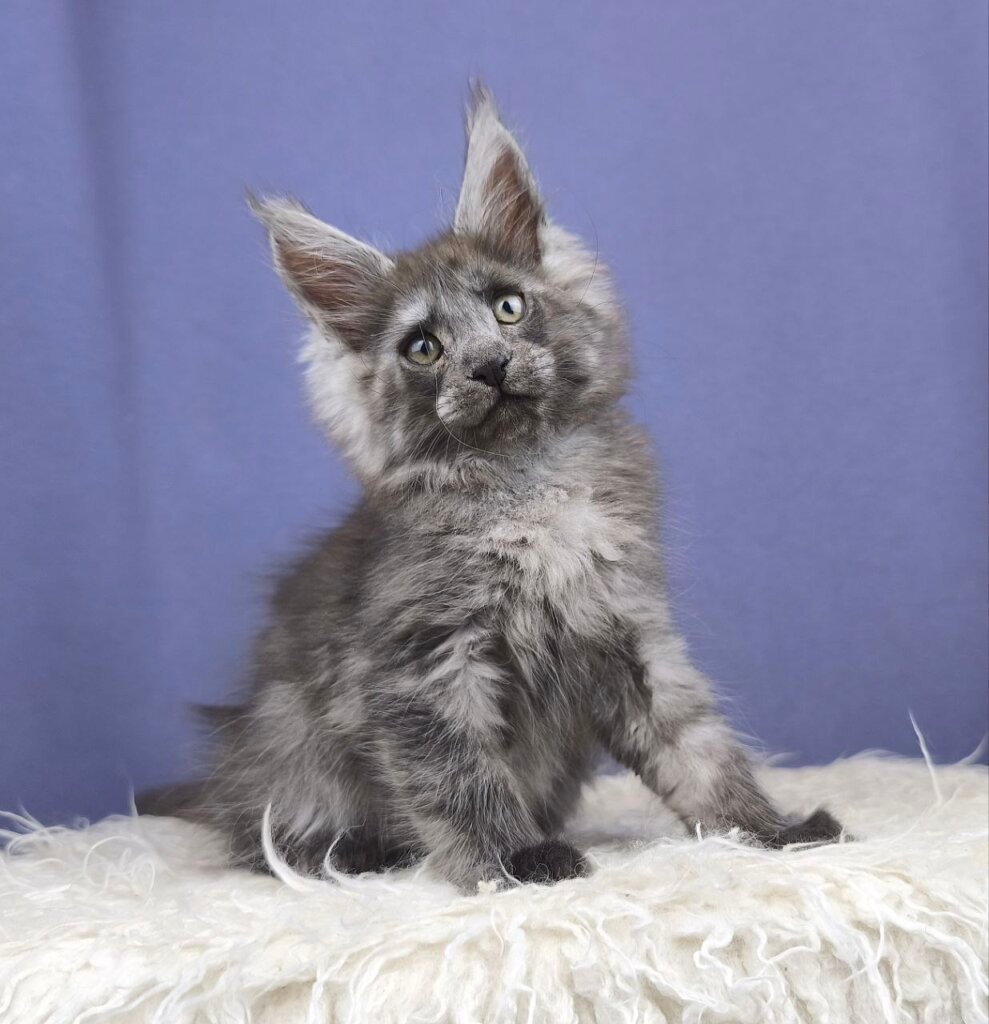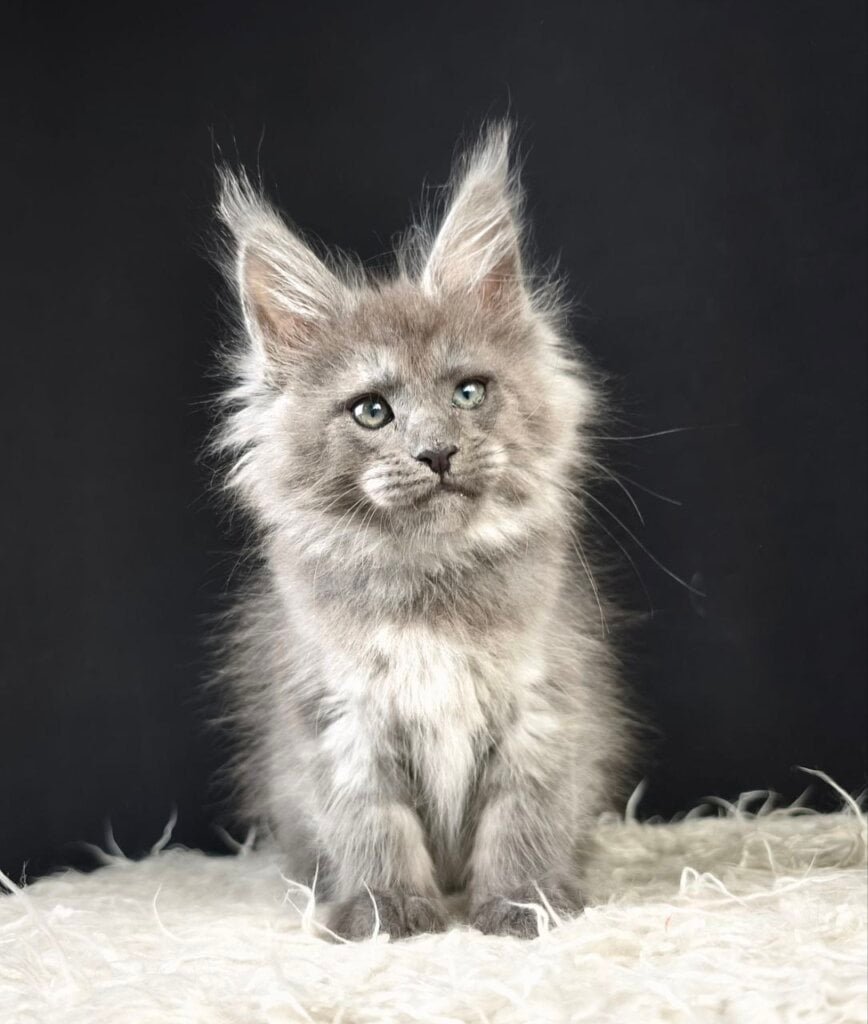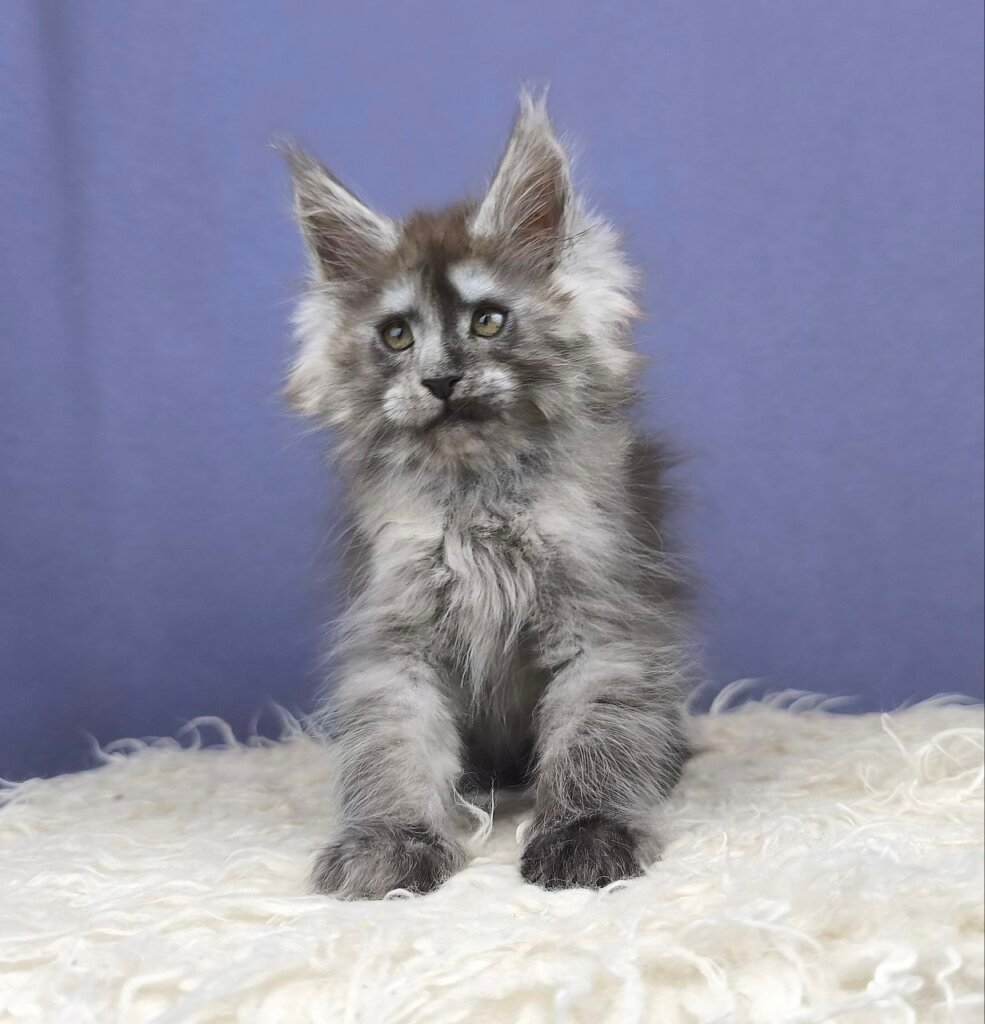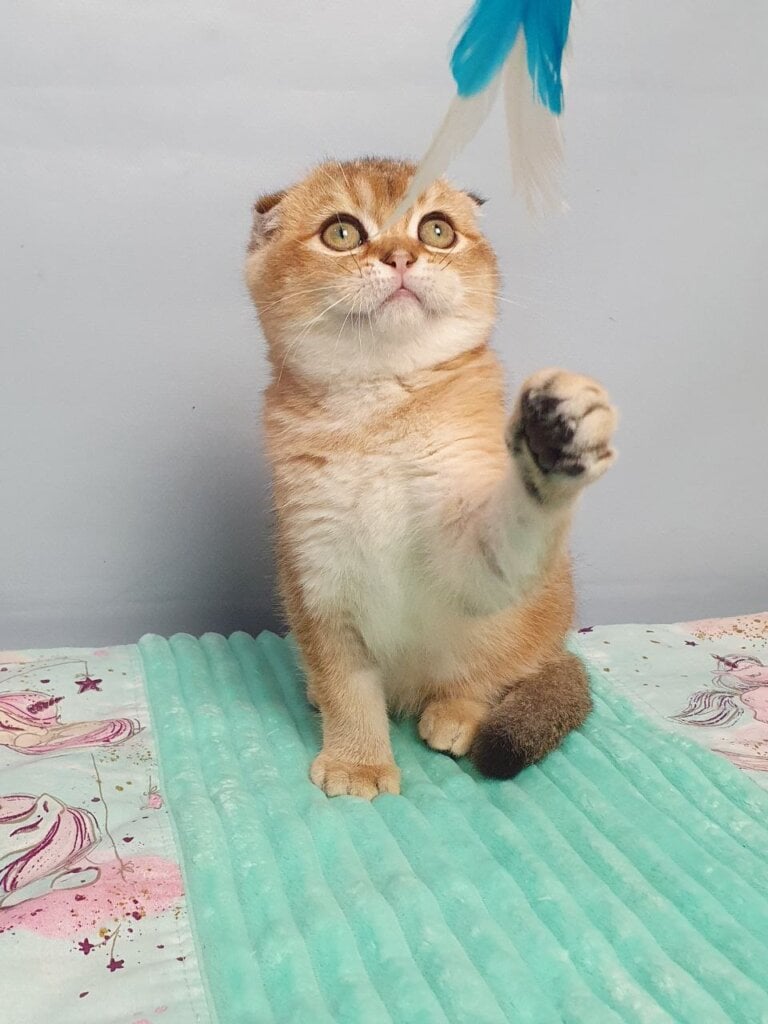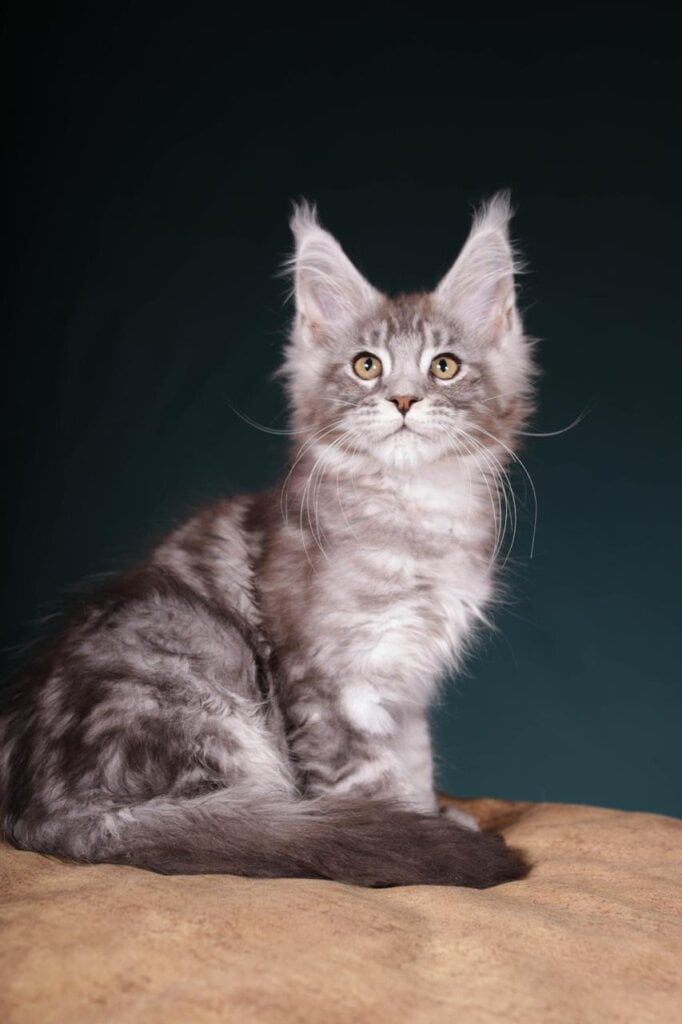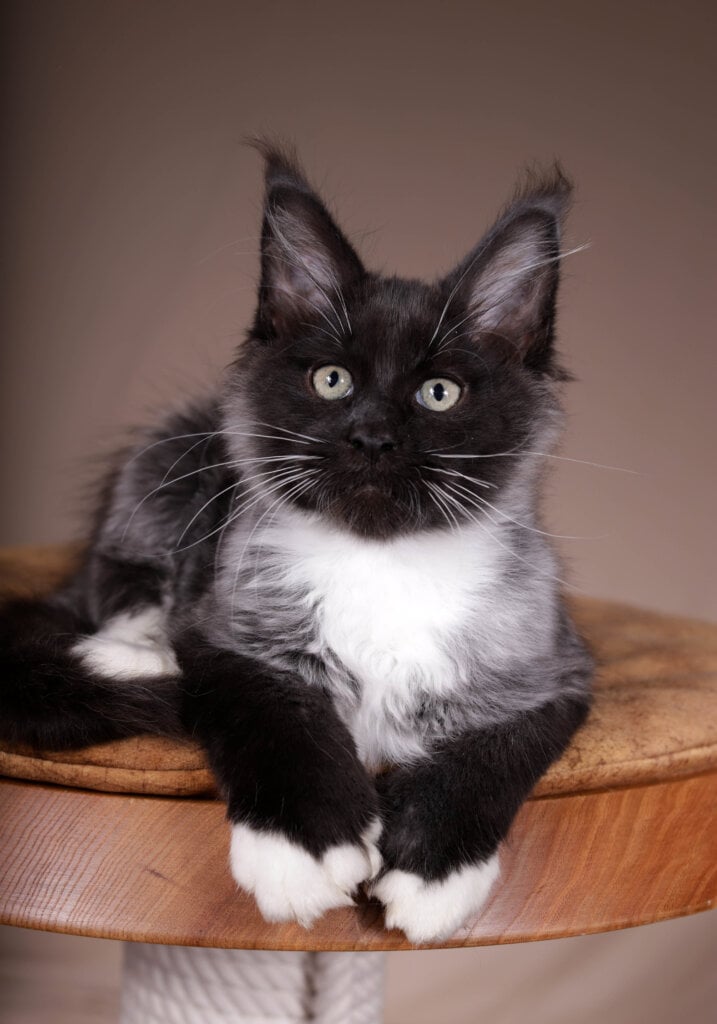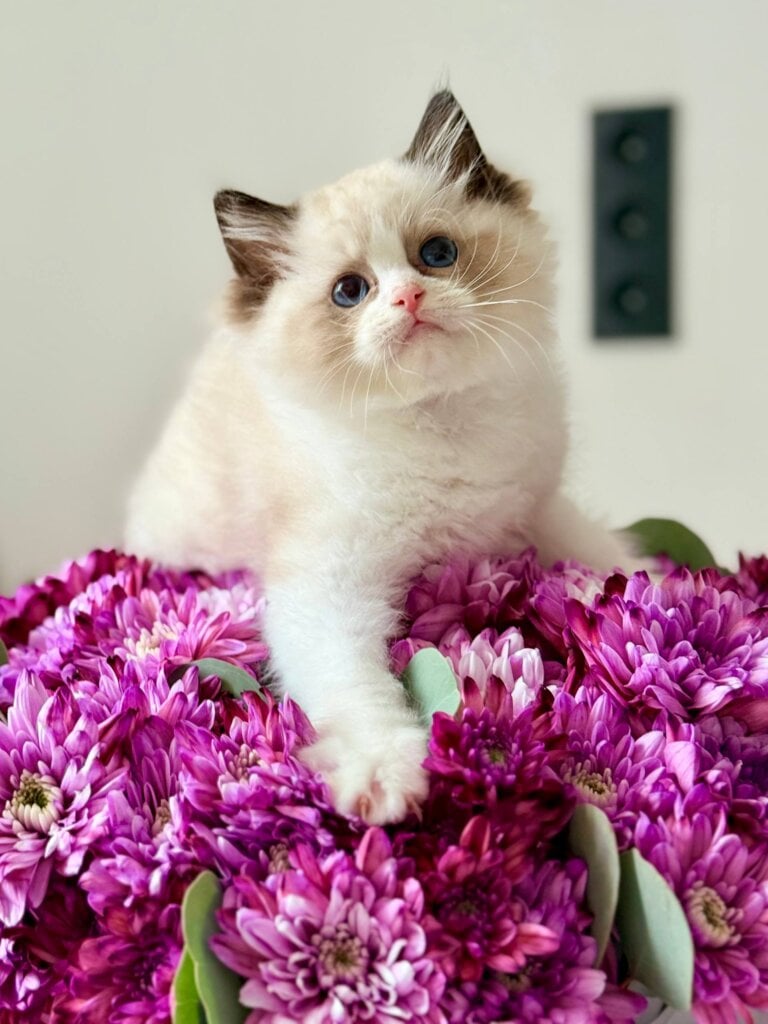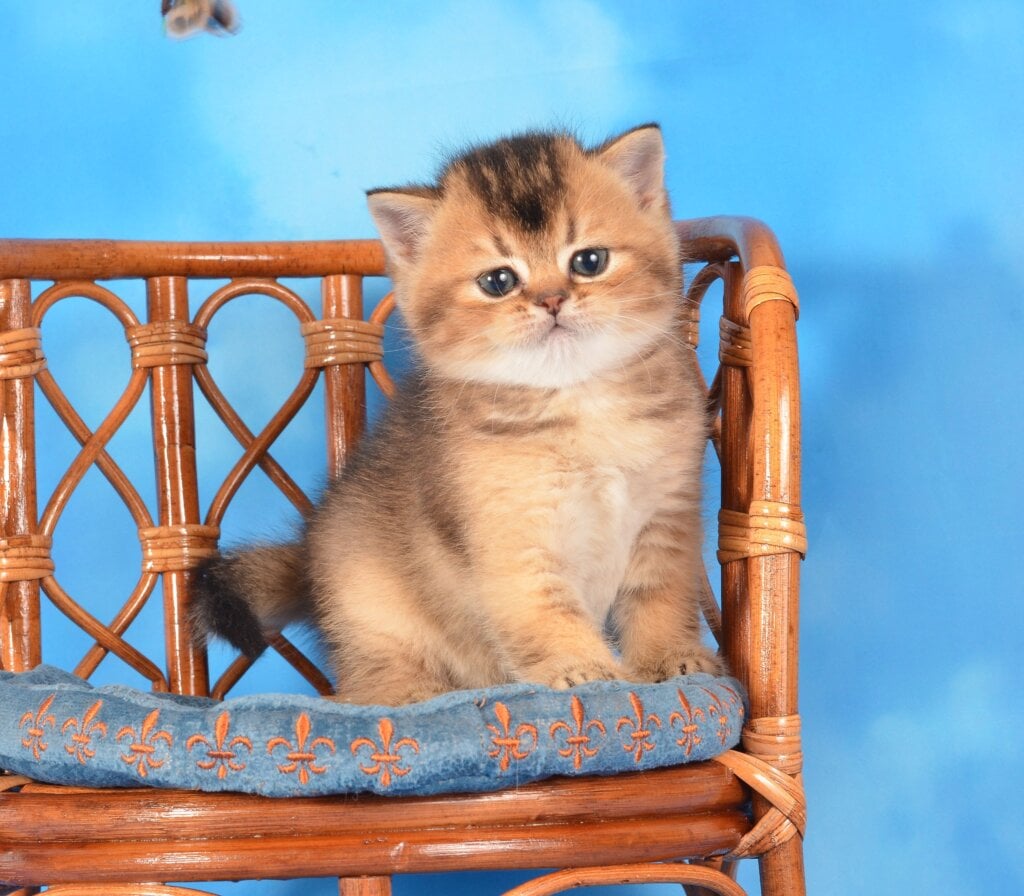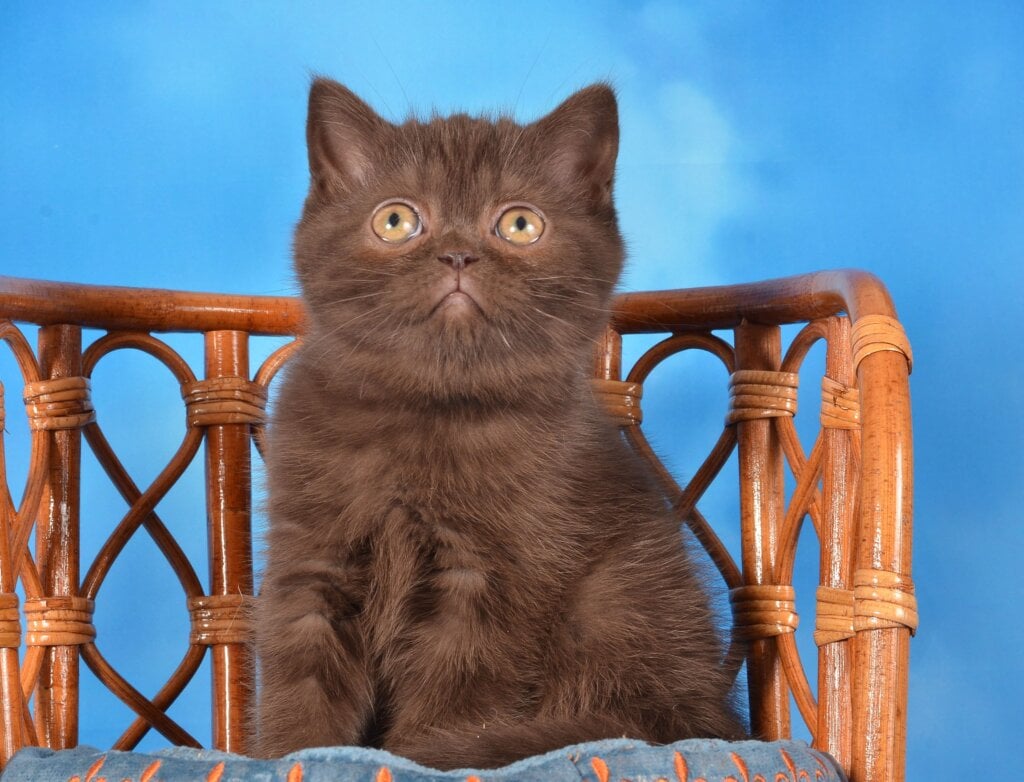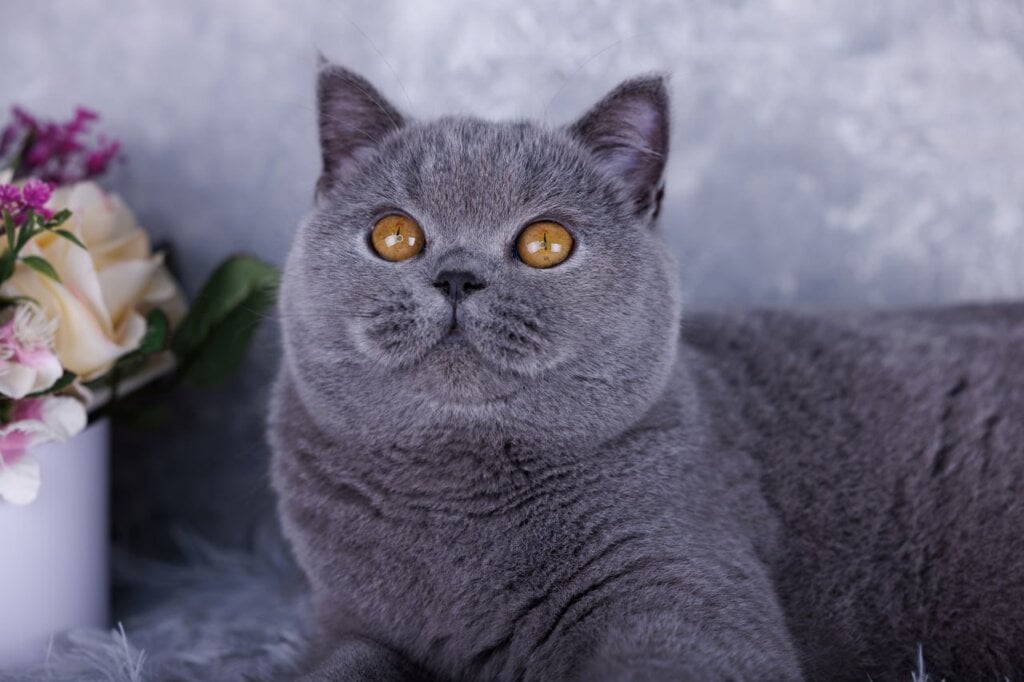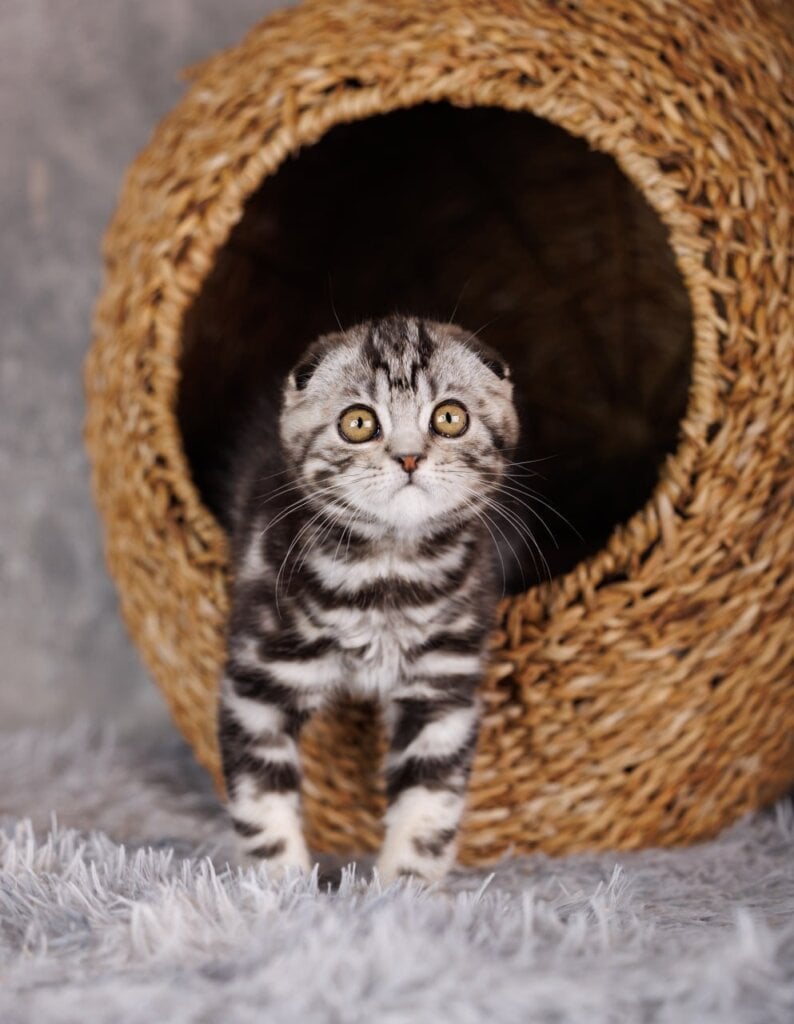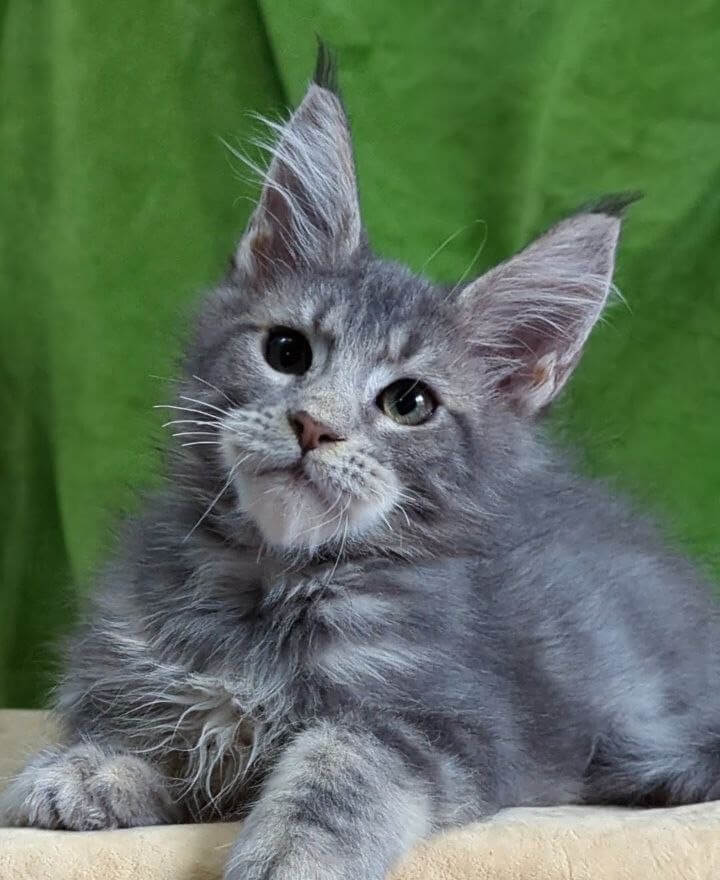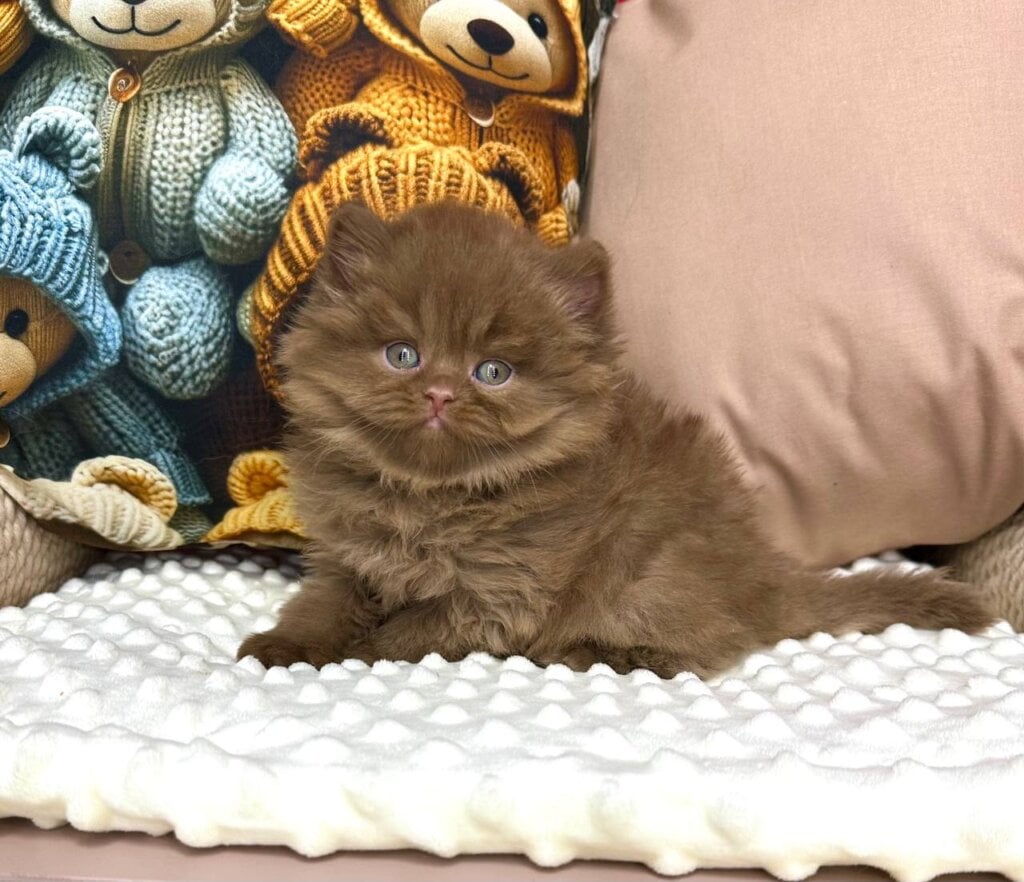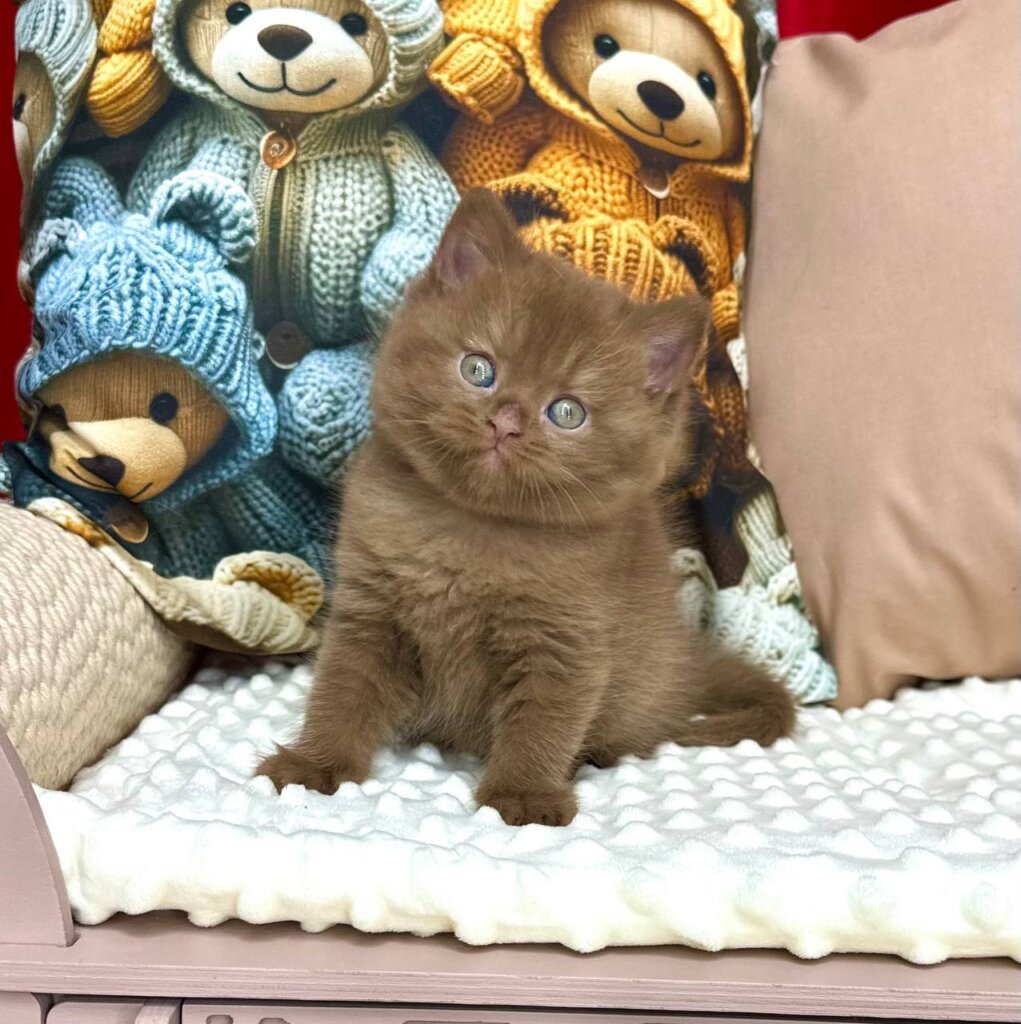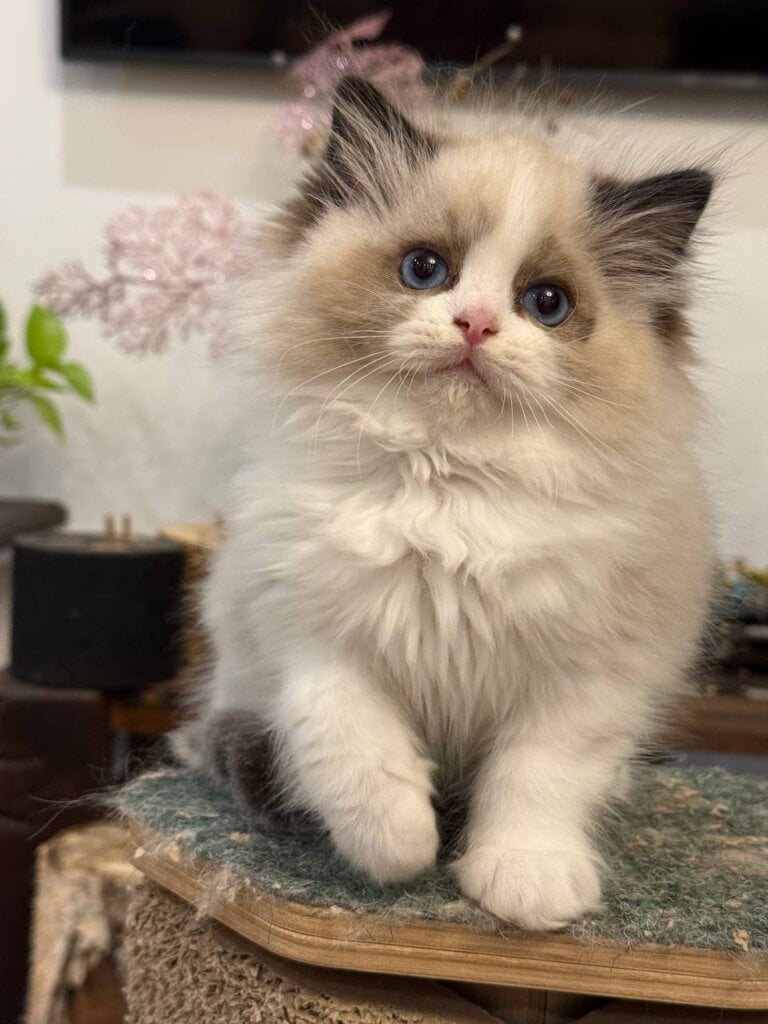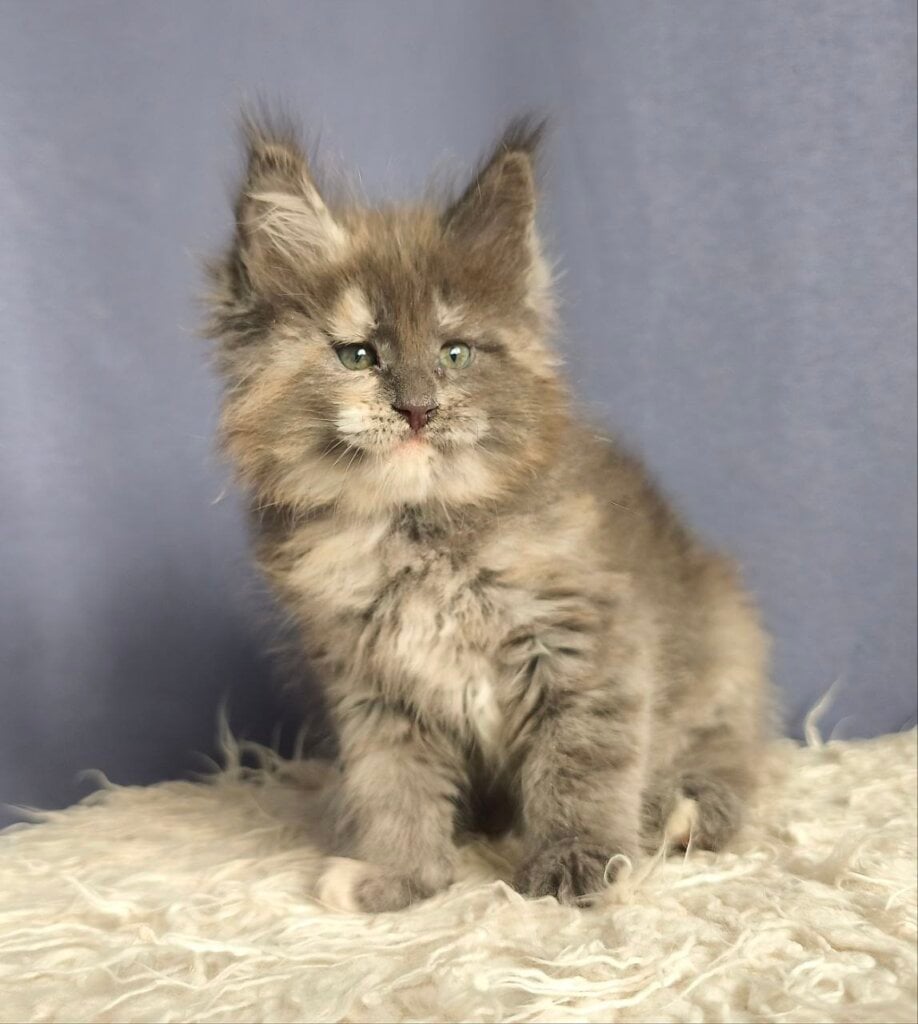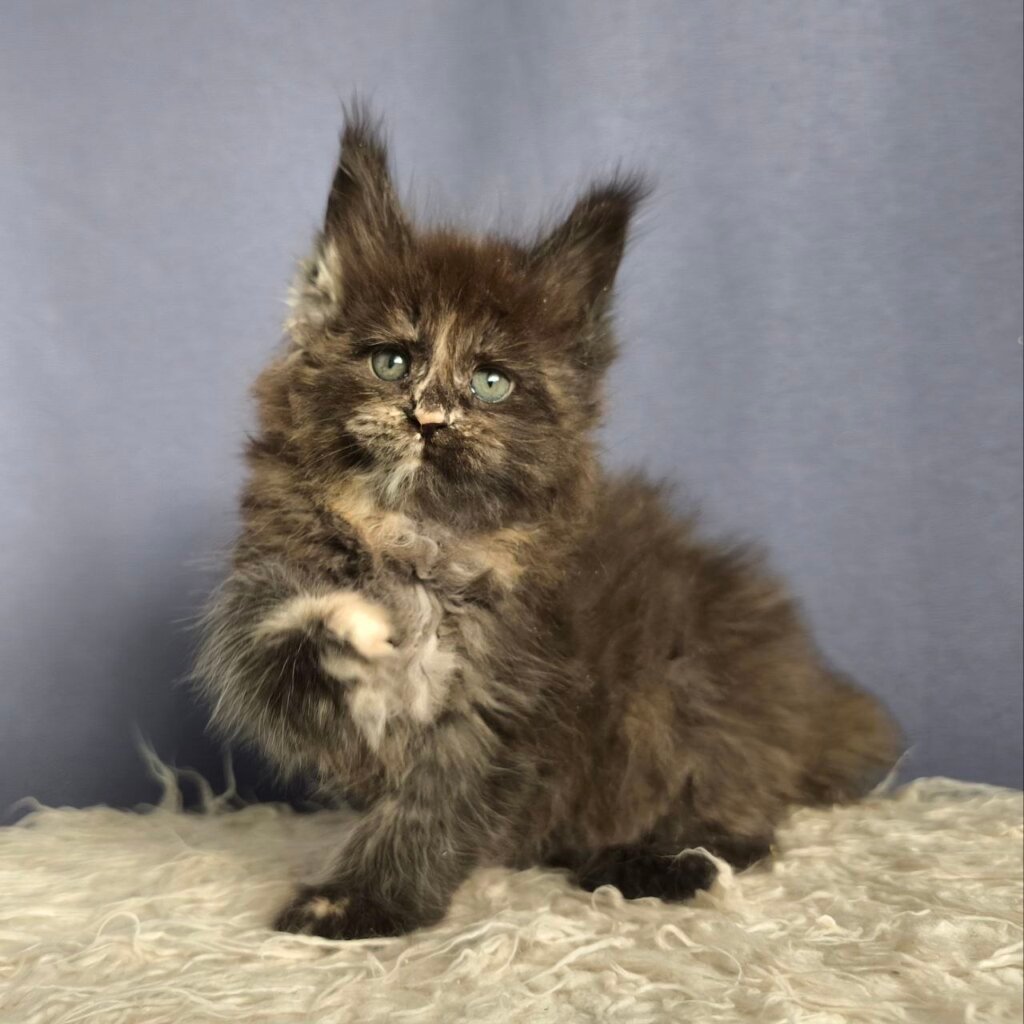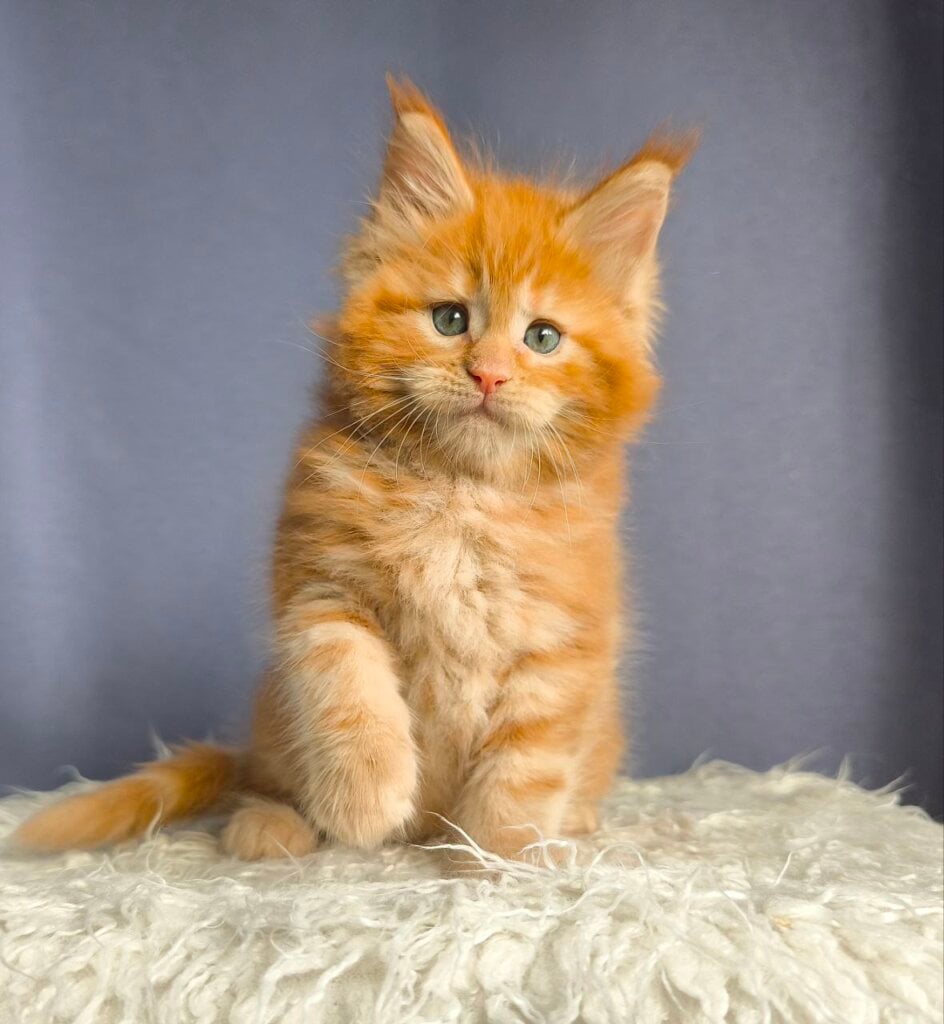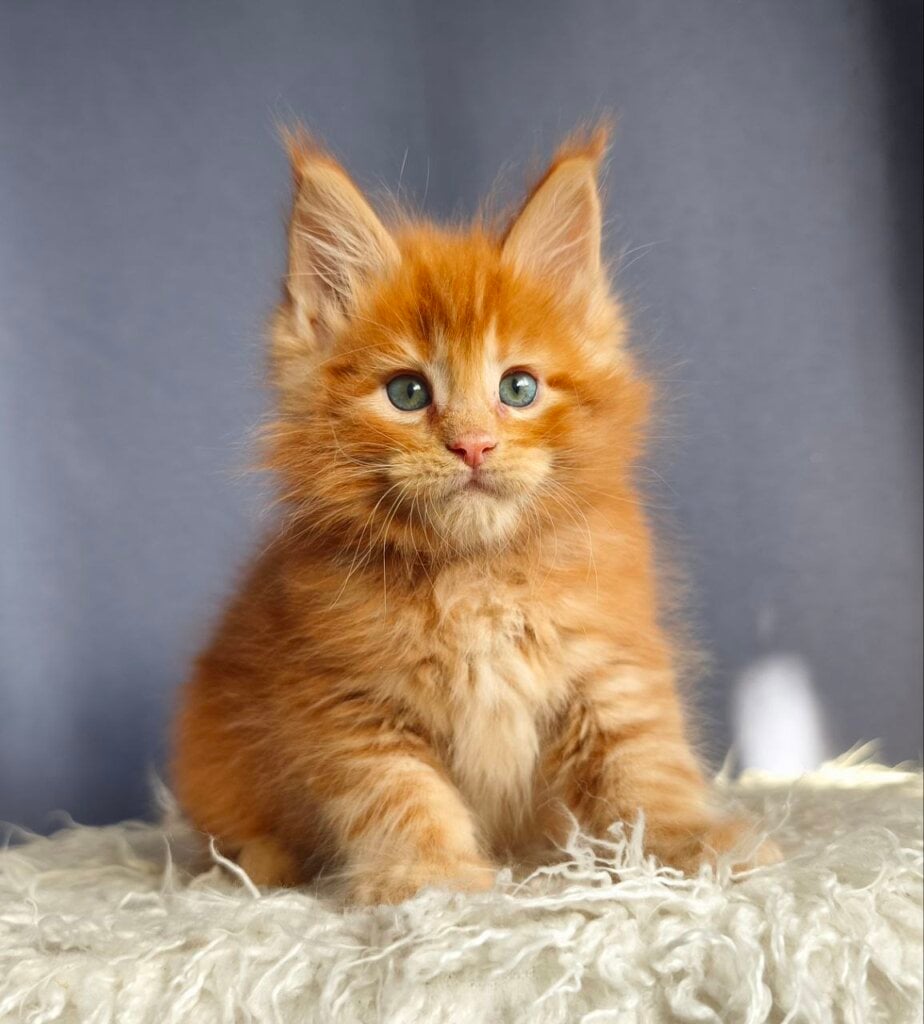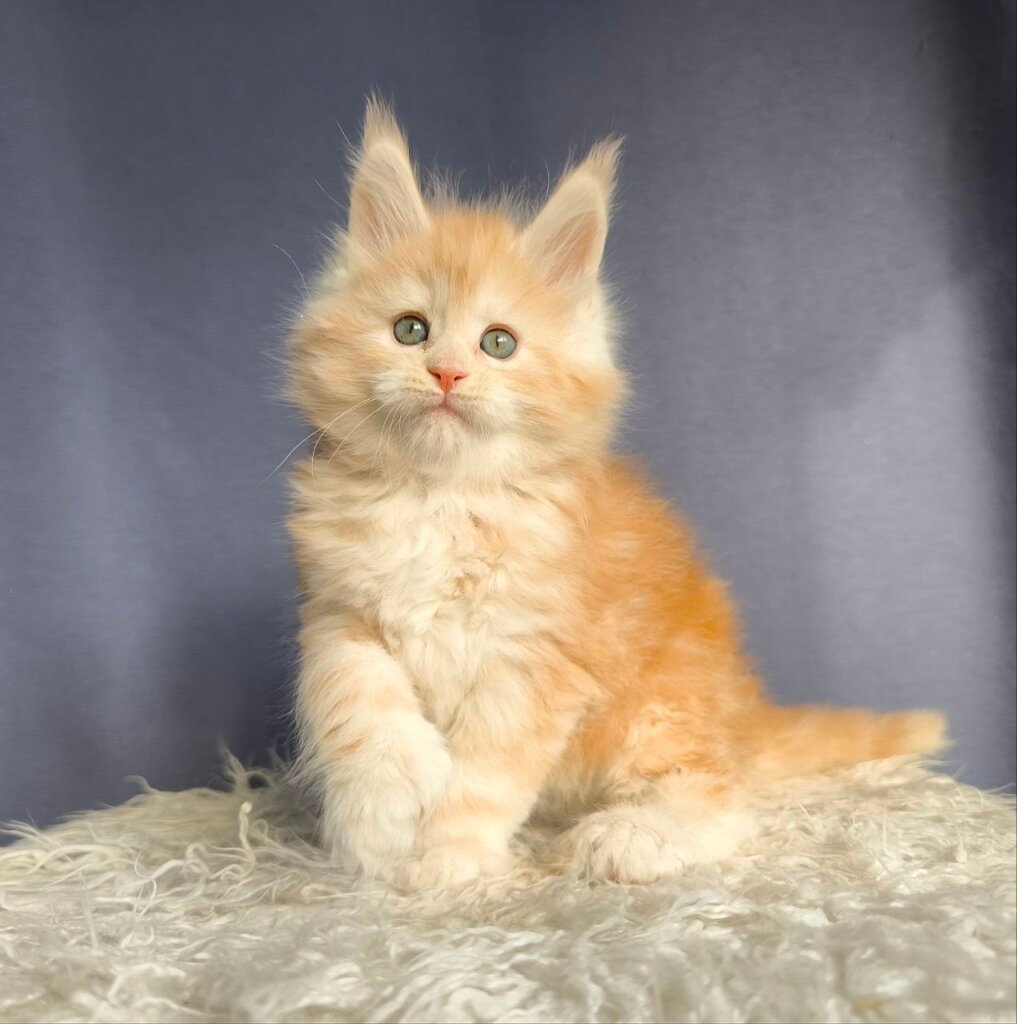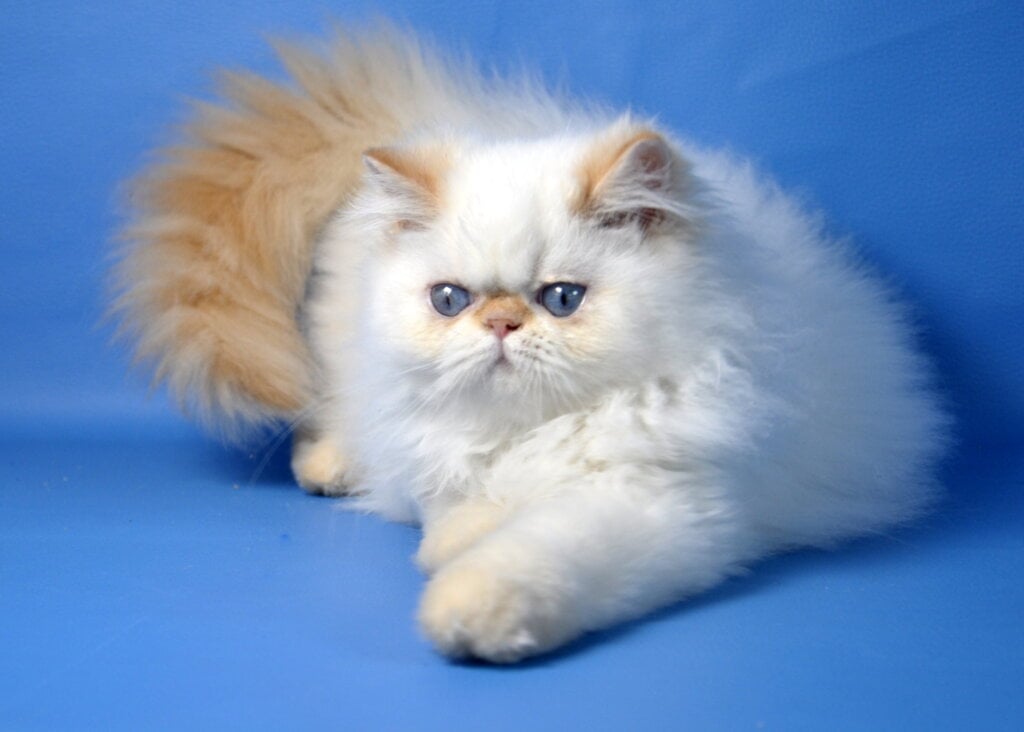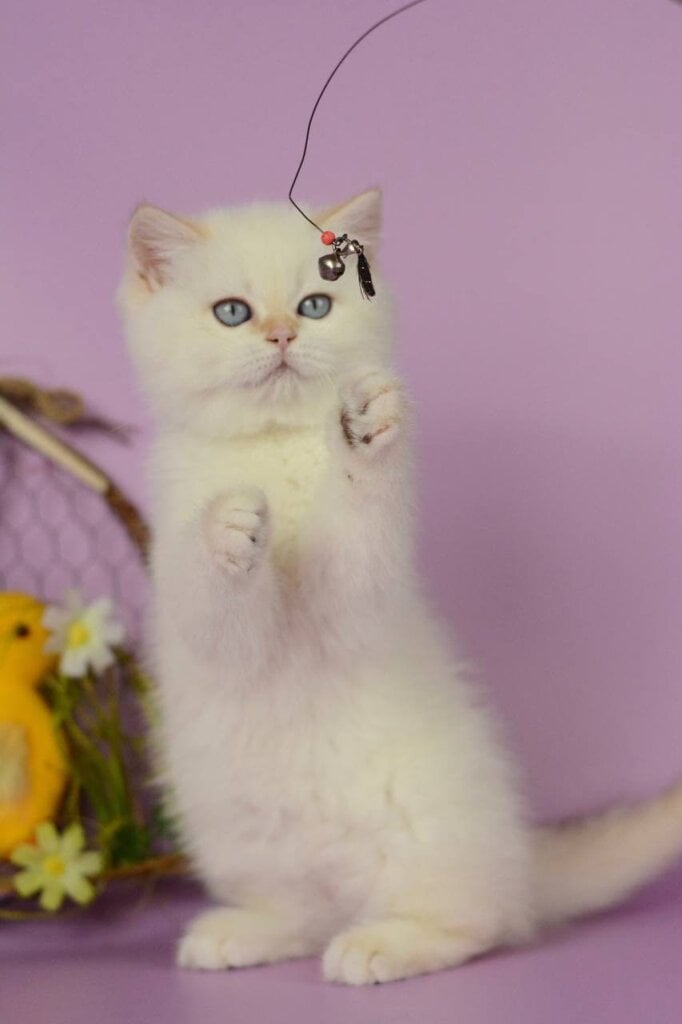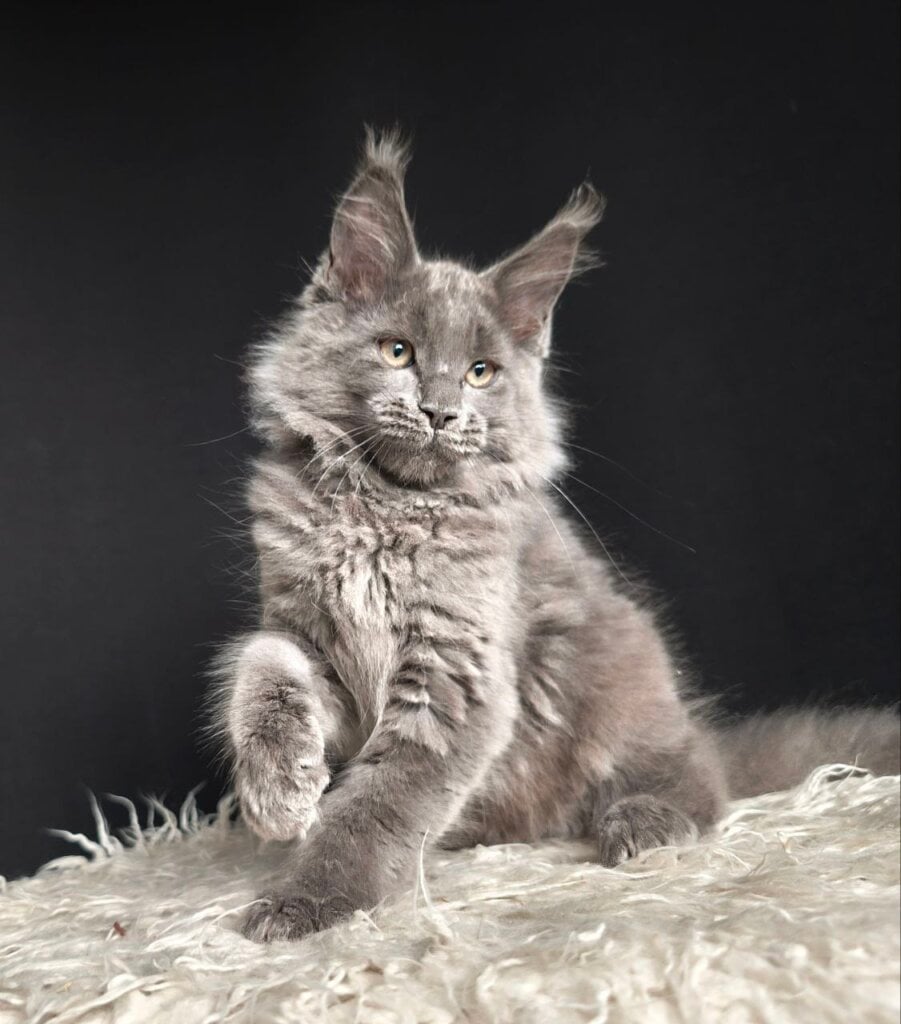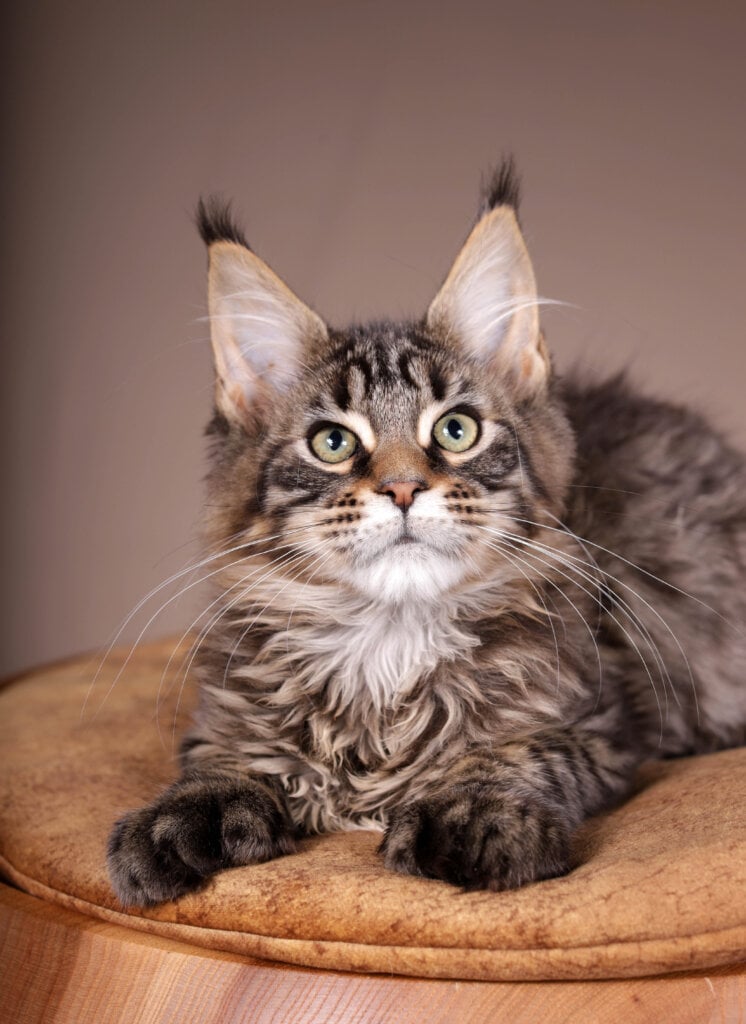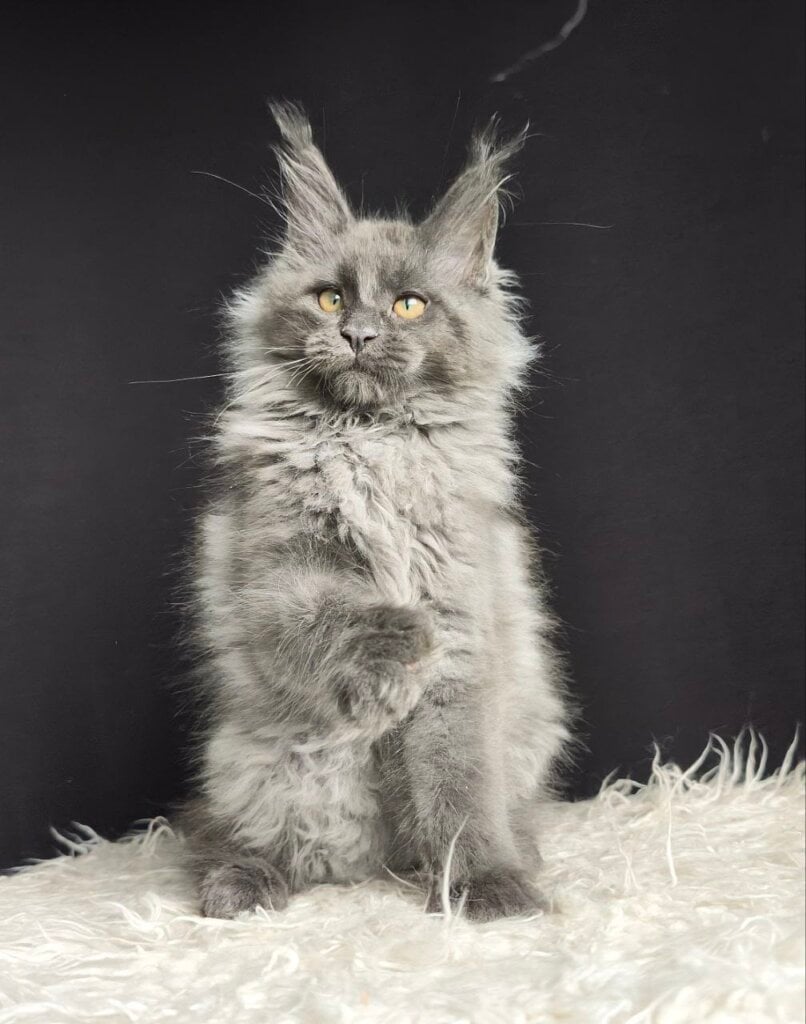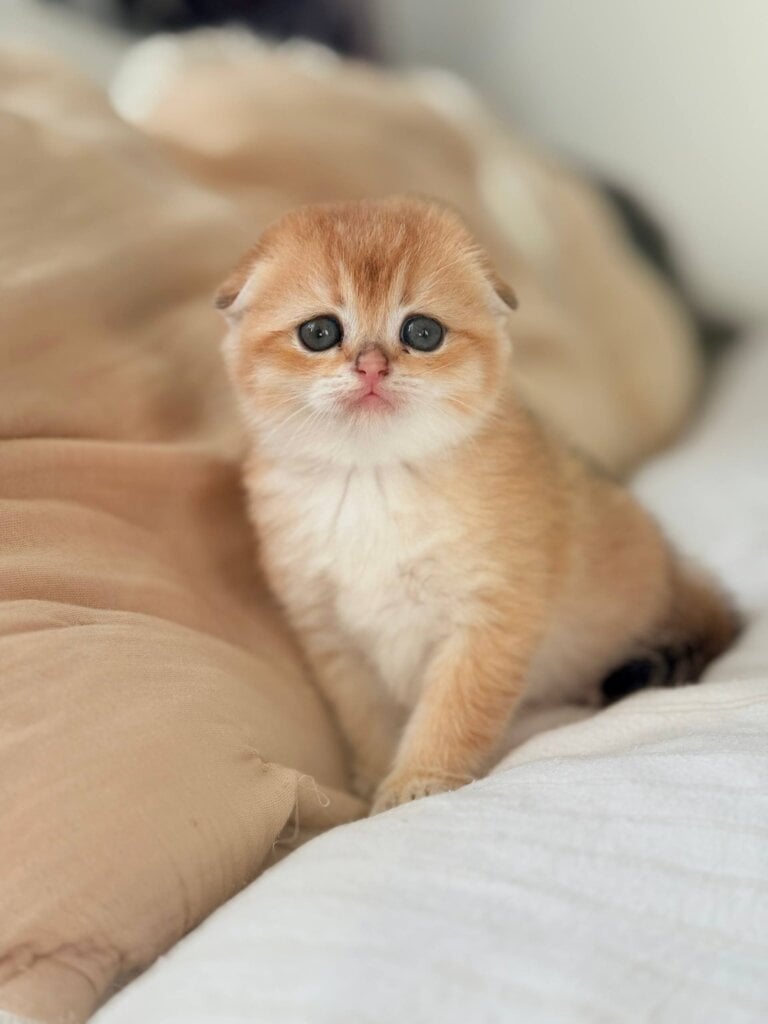Yes, British Shorthair’s do shed but their short, dense coats shed less fur than many long-haired breeds. Shedding can become heavier in spring and fall as they change coats for the seasons.
Regular brushing will keep fur off your clothes and furniture. Although most British Shorthairs groom themselves, a fast brush once or twice a week doesn’t hurt.
Next, view easy do-it-yourself grooming tips.
British Shorthair Shedding Explained
British Shorthairs have a very plush, double-layered coat, which contributes greatly to their shedding. Shedding is a natural cycle for these felines, yet the extent and timing of hair loss may vary with season and wellness.
1. The Plush Coat
The British Shorthair’s coat is notable for its density and plush texture. This double-coat – a soft undercoat covered by a coarser top coat – results in fur that is usually thick and abundant. This thickness helps these felines stay comparatively toastier, as the mercury falls.
Simultaneously, the plush coat can translate to more apparent shedding, particularly as the seasons change. Brushing helps keep the fur in good shape, and most owners discover that a quick brush every other day keeps loose hairs under control.
It’s this coat that’s a huge part of the reason why British Shorthairs are such beloved fancies. Most families adore the texture and appearance of their fur. Maintaining that coat’s health requires effort. If their coat begins to appear sparse or patchy, it may be an indicator that all is not well and a visit to the vet is in order.
2. Shedding Cycle
British Shorthairs shed all year round. Their shedding increases and decreases with fluctuations of daylight and temperature. Come spring, most owners are surprised to find more hair on the brush or couch.
This is totally normal and helps the cat prepare for warmer days. In fall, yet another shedding spike assists them in sprouting in a thicker winter coat. Hormonal changes contribute. Neutered or spayed cats shed a little less, but every cat is different.
Understanding the shedding cycle enables owners to schedule grooming and detect any abnormalities that may require attention. If your British Shorthair begins to shed more or less than normal, it’s wise to search for triggers such as stress or sickness.
3. Seasonal Shifts
Spring and fall are bigger changes. During spring, British Shorthairs shed their thick winter coat. They shed less in cold months, keeping it close to their skin for warmth. You can anticipate lots of hair during these transition times as owners, and having a good brush at the ready is key.
It facilitates establishing a seasonal grooming routine. A daily brush in spring and fall will reduce stranded hair and maintain a beautiful coat.
4. Breed Comparison
British Shorthairs don’t shed as much as some breeds. For instance, Persians and Maine Coons shed more because of their longer fur. Shorthaired breeds such as the Russian Blue or Siamese shed less and have finer coats.
The British Shorthair’s coat requires more grooming than these low-shedding breeds, but it’s more manageable than many long-haired cats. A few breeds are considered hypoallergenic because they shed less, but British Shorthairs don’t fall into that category.
Still, most owners report their shedding manageable.
5. What to Expect
Shedding is normal and varies by season. A bit of fur is OK. Just keep an eye out for bald patches.
Excess fur tends to shed more in the spring and fall-keep the brush close! Check your cat’s coat often to keep it healthy.
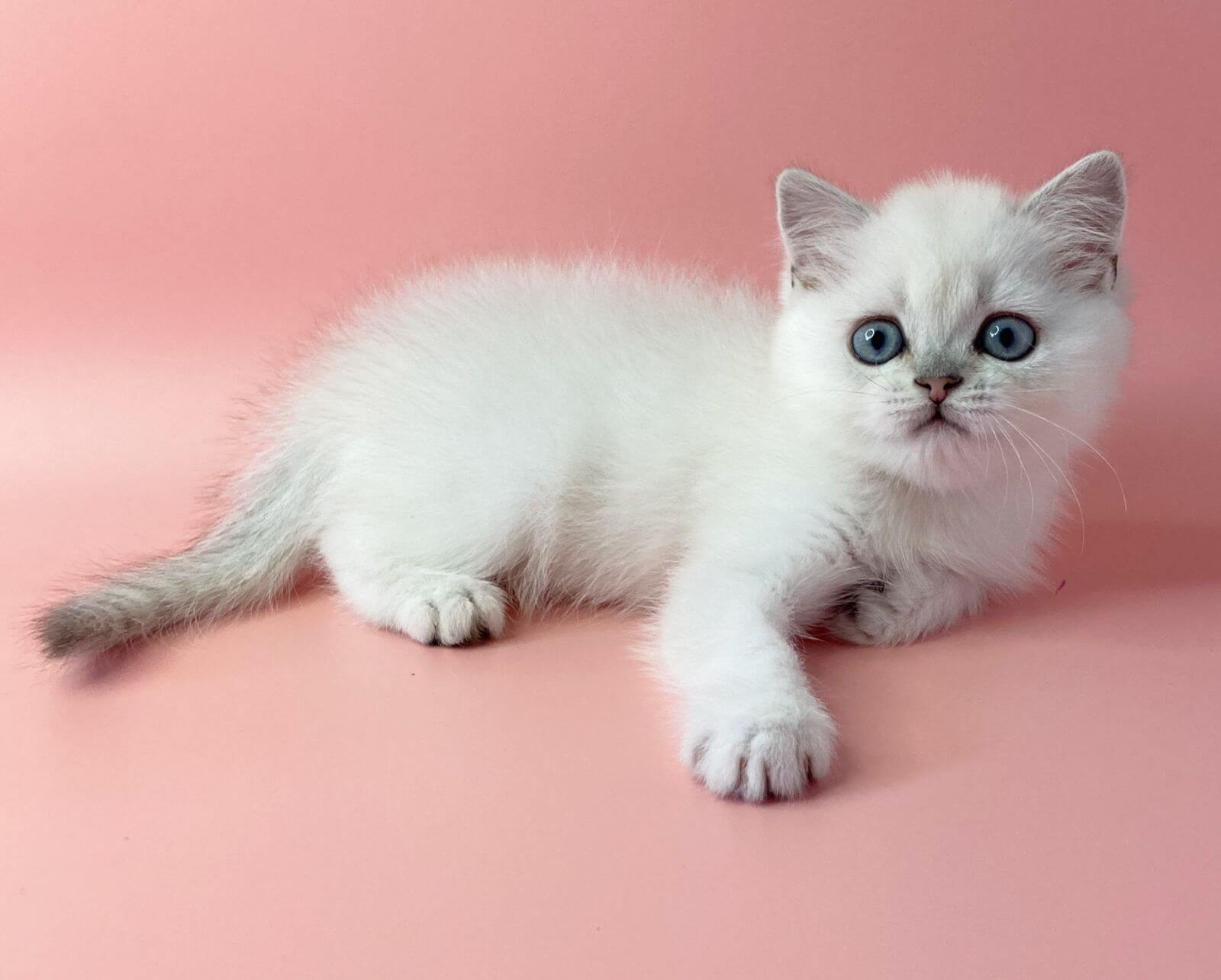
Essential Grooming Practices
British Shorthairs have dense plush coats that shed all year round but more heavily in the spring and autumn. Consistent grooming is the most effective method of controlling shedding, keeping fur from furniture and assisting in keeping your cat healthy. Grooming offers more than a tidy appearance-it promotes skin health, minimizes hairballs, and even prevents certain feline maladies.
The Right Tools
- Slicker brush for loosening dead hair
- Fine-toothed comb for the undercoat
- Soft bristle brush for a glossy finish
- Nail clippers for regular trims
- Pet-safe ear cleaning wipes
- Toothbrush and cat toothpaste
Armed with the right tools, you can control shedding and groom your British Shorthair’s coat to perfection. A slicker brush beats out loose hair, and a fine-toothed comb goes deep into the undercoat. Nail clippers and ear wipes keep your cat’s paws and ears healthy, which is imperative as British Shorthairs can pick up ear mites or sharp nails that scratch.
Quality, comfortable tools make grooming more manageable for both you and your cat, particularly if you’re beginning to assemble your kit.
Brushing Technique
Brushing should be mild, in short strokes in the direction of hair-grain. This pulls out dead fur without pulling the skin. In heavy shedding seasons, such as spring and autumn, brush your British Shorthair two to three times a week. In the more sedate months, once a week suffices.
The coat doesn’t matt, but brushing disseminates skin oils, which keeps fur glossy and healthy. Brush from head to tail. Pay extra attention to dense areas such as the neck, where dead fur accumulates. Always brush with slow strokes, never yanking or dragging the brush.
If your cat is skittish, experiment with brushing while playing with treats or toys. This can transform grooming into an enjoyable bonding moment, less stressful for you both.
Bathing Frequency
Bathing isn’t required much for British Shorthairs unless they get into something particularly sticky. They’re too much of a bath-o-phile, stripping natural oils and drying out their skin. If a bath is necessary, use room temperature water and a mild cat shampoo whilst steering clear of the eyes, nose and ears.
When in doubt, always consult your vet. Certain cats are special needs, and guidance from a professional can assist you in making the appropriate decision. Most of the time, however, brushing is sufficient to keep their coat clean without the dangers that frequent washing brings.
Other Grooming Needs
Nails are a necessity-nip them back every few weeks to avoid scratching. Wipe ears with pet-safe wipes to prevent ear mites. Brush your teeth bi-weekly to combat gum issues and tooth decay.
Grooming engenders trust and maintains your cat’s happiness.
How Diet Influences Coat Health
Diet is a significant factor in British Shorthair shedding. What your cat eats can affect their coat’s appearance, texture and shedding. The right changes can spur your feline to sport a sleek, glossy coat and reduce those random tufts strewn about the house. A lot of owners see less shedding and better fur when they concentrate on feeding a balanced diet.
If you catch your cat shedding more or their coat becomes dull-looking, it could be a sign that it’s time to review their bowl.
- Turn to high-protein fare to assist fur maintain strength.
- Include fatty acids such as omega-3 and omega-6 to add shine and softness to their coat.
- Choose moderate fat and low carb diets to reduce shedding.
- Use foods with real meats and simple, whole ingredients.
- Go for wet foods for cats that don’t drink a lot of water.
- Look for food allergies if fur looks dull or brittle.
- Modify for senior cats – softer food, fewer calories.
Key Nutrients
Proteins are the foundation for a healthy coat. Cats require meat-chicken, turkey or fish-for strong, glossy coats that don’t break or shed as much. A high-protein diet isn’t merely helpful, it’s required for British Shorthairs.
Fatty acids, such as omega-3 and omega-6, maintain silky fur and prevent skin dryness. When your cat receives an adequate amount, you’ll typically notice less shedding and enhanced shine.
Many owners shop for foods stamped ‘complete and balanced,’ but it’s wise to read the ingredient list. Skip the high-carb fillers, since too many grains or potatoes can cause dull fur and increased shedding.
Vitamins A, E, and B promote fur growth and skin health. You can come by these nutrients in quality commercial foods or throw them in with supplements-after consulting a vet, of course. For felines with food allergies, a change to a hypoallergenic diet can halt coat issues quickly.
Hydration’s Role
Cats who fail to hydrate tend to have dry skin and brittle fur, equating to shedding. Wet food is an easy means of increasing your cat’s hydration, particularly for cats that eschew their water bowls.
Water fountains can add an element of playfulness to drinking for cats, which helps keep them interested and hydrated. Be sure to monitor your cat’s water intake, particularly in dry or hot conditions.
Too little water can exacerbate shedding and make skin flaky. If your cat is grooming more but their fur appears coarse, provide additional fresh water or increase wet food.
Supplement Use
- Fish oil (omega-3)
- Evening primrose oil (omega-6)
- Biotin
- Zinc
- Vitamin E
Supplements might assist some cats, but every cat is unique. Fish oil and evening primrose oil are typical coat health choices. Biotin and zinc are sometimes used for cats that have shedding issues.
Be sure to chat with a vet prior to supplement. Observe your cat for differences to see if the supplement is effective.
Beyond the Brush: Hidden Influences
Shedding in British Shorthair cats extends beyond the brush. Their double coat is synonymous with consistent, seasonal shedding-an anticipated aspect of ownership with this breed. What really determines how much hair you discover on your couch? Stress, home environment and hormones are all big factors. With the proper attention, shedding can be an occasion event, not a full-time migraine.
Stress Impact
Stress puts them into more shedding and Brit Shorthairs. A stressed cat can shed more fur all of a sudden and you can even find bald spots. Typical culprits are excessive noise, new animals, relocation or abrupt changes to their diet. Even boredom can be taxing for these neurotic felines.
Providing your cat with a secure, secluded location does wonders. Interactive toys occupy their brain-consider feather wands or puzzle feeders. It’s crucial to monitor behavioral changes. If your cat begins hiding more or grooming less, it could be stressed.
Consistent play, soft routines and plenty of affection can comfort your cat and reduce stress-driven shedding.
Home Environment
A quiet, emotionally-stable home seriously tamps down the shedding. British Shorthairs require a safe haven where they can withdraw and unwind. This doesn’t need to be ostentatious-a comfy bed in a silent nook does the trick.
Try to minimize radical shifts. Don’t rearrange the furniture or adopt new pets too frequently, either – your cat will be unnerved, causing more shedding. Regular play works wonders. It develops trust, keeps your cat agile, and burns off anxious energy.
Tiny rituals, such as feeding at the same hour each day, count. When a British Shorthair feels secure, his fur and shedding tend to get better.
Hormonal Changes
Hormonal changes may induce increased shedding. While pregnant, nursing and fever cats tend to shed more fur due to the metabolic stress. Spaying/neutering can have an effect, although you’ll typically see the coat return to normal when the hormones calm down.
Occasional abnormal shedding is accompanied by other symptoms-if you observe bald patches or skin alterations, that’s an indication to contact your veterinarian. An even diet controls the hormones.
Top notch protein and omega fatty acids maintain coat strength. If you observe hormonal shedding, remain composed and patient. Most felines recover with appropriate care and assistance.
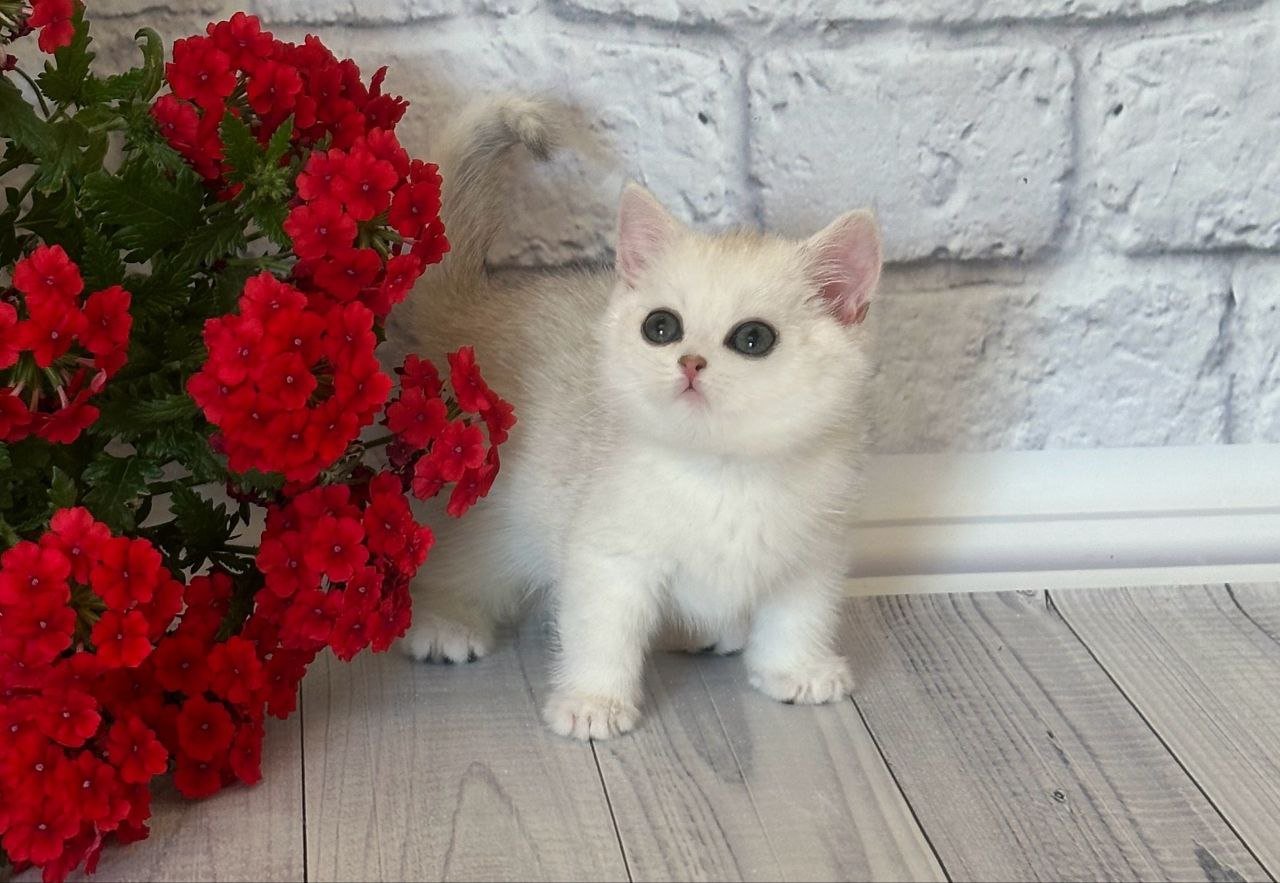
When Shedding Signals a Problem
Shedding is life for British Shorthair cats, but not all hair loss is the same. Pet parents need to recognize the markers that differentiate normal, healthy shedding from the type that signals trouble. Keeping an eye on your cat’s coat and remaining sensitive to changes will help you catch issues early and keep your cat in good shape.
Normal vs. Abnormal
British Shorthairs shed about an average amount, and their double coat thickens in the cold and thins in the heat. You may find a lot more hair around your house when the seasons change, which is expected.
If you’re observing bald patches, thinning areas, or a coat that appears lifeless or brittle, that’s atypical. Abrupt shedding shifts – such as clumps of fur or a greasy, flaking coat – warrant investigation. These could be indicatives of health issues such as skin allergies, hormonal changes or even stress.
Be attentive to your cat’s normal shedding cycle, as all cats vary. Some shed more in spring or fall, others might have a constant low-level shedding throughout the year. Monitoring what’s normal for your cat allows you to identify when something is amiss.
When shedding is compounding the itching, licking, or skin wounds, it’s time to dig deeper.
Skin Conditions
| Skin Issue | Signs to Watch For | How It Affects Shedding |
|---|---|---|
| Allergies | Itching, redness, small bumps | Patchy hair loss, inflamed skin |
| Fungal Infections | Circular bald spots, scaling | Clumps of hair falling out |
| Flea Infestations | Scratching, flea dirt | Hair missing at tail or neck |
| Autoimmune Disorders | Sores, ulcers, crusting skin | Random bald patches, slow regrowth |
| Bacterial Infections | Oozing, odor, swelling | Sticky fur, hair breaks easily |
Allergies–food, dust, pollen–can cause cats to shed more, particularly if they scratch a lot. Infections, such as ringworm, can result in circular bald patches and flaky skin. Fleas are the primary suspects in sudden hair loss, particularly around the tail.
Be observant for any skin or coat changes and inspect your cat’s skin frequently. If you notice any red spots, sores or swelling, don’t delay-visit a vet.
When to See a Vet
Don’t take a shot in the dark with your cat’s coat. If your British Shorthair’s shedding looks weird-bald patches, open sores, or the skin appears red or raw-it’s time to consult your vet.
Any indication of pain, excessive grooming, or alopecia with polyphagia or polydipsia may indicate diabetes mellitus or other diseases. Regular checkups count.
Even minor shifts, such as a slick or more dandruff than usual, could indicate something more significant. Early assistance can prevent little issues from ballooning, and a vet can spot causes such as diabetes, thyroid issues, or skin infections.
Debunking Common Shedding Myths
A lot of people believe all cats shed a lot. British Shorthairs always seem to be the ones that catch the blame. Many assume their double-coated dogs shed more hair, but this isn’t the case. Shedding is natural for all cats, regardless of breed or fur length.
Even British Shorthairs, with their velvety double coats, shed year-round, not just in a single season. There may be a little extra hair in the spring and fall, but you’ll discover loose hair on your furniture and clothes regardless of the month. Long-haired cats aren’t the only ones shedding hair everywhere – even short-haired cats, such as the British Shorthair, shed.
Hair length doesn’t affect how much they shed it-only how visible. A short, plush coat can shed as much as a long one and you will still have to sweep or vacuum. Even hairless breeds shed skin flakes and dander, so no breed is truly non-shedding.
Myth – frequent baths will fix shedding. A bath may remove some shed hair, but it will not prevent the cycle. Most cats don’t even like water, and too many baths can dry out their skin. What does work is regular brushing.
The truth is that quick brush a couple times a week knocks out loose hair, distributes skin oils, and keeps their coat nice and soft. British Shorthairs often like the added attention and could even be a pleasant bonding time for you both.
Statesman shedding myths #5 – People fret that shedding signifies their cat is ill. In fact, shedding is nearly always normal, and it maintains a cat’s coat health. If you notice bald patches or your cat is excessively scratching, then it may be time to visit a veterinarian.
A little hair on your couch is not reason to freak out. While genetics certainly contribute to the shedding of a British Shorthair, what your cat consumes, the sunlight, and even the air inside your house can affect hair visibility.
Grooming is how you deal with shedding, not halt it. Armed with the proper brush and a light touch, you can keep shedding under control and assist your British Shorthair in looking and feeling their absolute best.



